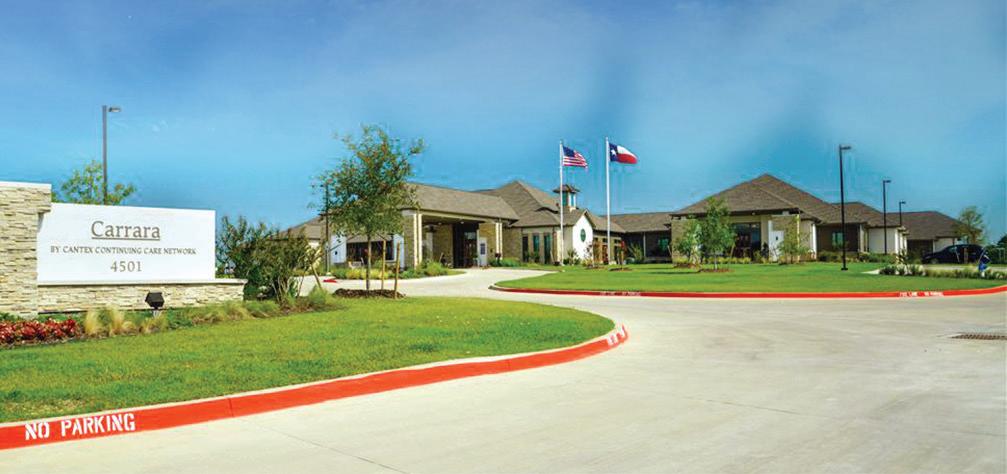More Inside
NOAH WYLE THE “DOCTOR” IS IN FROM FROZEN TO FOCUSED


More Inside
NOAH WYLE THE “DOCTOR” IS IN FROM FROZEN TO FOCUSED

TEXAS JOINT INSTITUTE
THE LEADING SURGEONS OF ORTHOPAEDIC EXCELLENCE


Total
Headache

Kwame Ennin, MD, MBA, is a fellowship-trained board-certified orthopedic surgeon at Texas Joint Institute in McKinney and Plano, Texas who is an expert in hip and knee replacement procedures, adult reconstructive surgery, and nonoperative osteoarthritis care.
Dr. Ennin earned his undergraduate degree in biochemistry from the State University of New York in Stony Brook. He then went on to receive his medical education at the University of Cincinnati College of Medicine, before completing his general internship and orthopedic surgery residency at The University of Texas Southwestern Medical Center in Dallas. He is fellowship-trained in adult reconstructive surgery from William Beaumont Hospital in Michigan.
Dr. Ennin has a keen desire to educate. He is a presenter and educator to his colleagues regarding direct anterior total hip arthroplasty, total knee arthroplasty, revision total knee arthroplasty, partial knee replacement, and robotic surgery. He is committed to ensuring that the best understandings and techniques are available to all surgeons in the orthopedic community. Dr. Ennin is passionate about research. He has, throughout his career, been involved in and published numerous peer-reviewed studies.
Dr. Ennin has been a leader in the North Texas orthopedic community since 2015. He delivers personalized, patientcentered, evidence-based care for his patients. He is committed to taking care of his patient’s joints for their lifetime.
Dr. Ennin specializes in:
• Hip Replacement Surgery
• Knee Replacement Surgery
• Revision Hip and Knee Replacement Surgery
• Or thopedic Surgery
• Osteoar thritis

4001



Welcome to another issue of LIVING WELL Magazine, where we continue our mission of delivering stories that inspire, inform, and spark conversation. With every edition, we aim to celebrate the people and topics shaping our communities—and this issue is no exception.
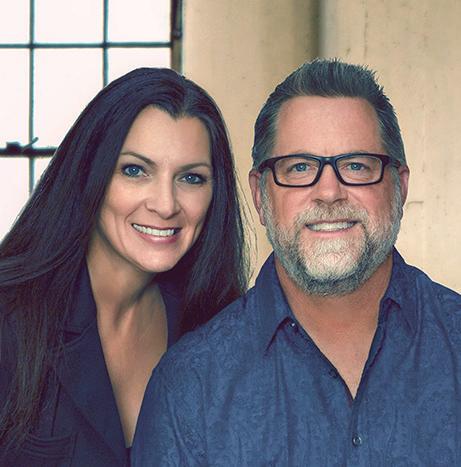
Leading off, we’re proud to present our Top Docs 2025 feature, spotlighting the outstanding physicians making a difference throughout Dallas and Collin Counties. From primary care to specialty fields, these professionals represent the very best in patient care, clinical innovation, and community service. Their commitment reminds us that quality healthcare isn’t just about treatment—it’s about compassion, trust, and the relationships built between doctor and patient.
Speaking of medical excellence, we’re also revisiting the impressive work of Texas Joint Institute on page 8. In an age where joint health plays a critical role in maintaining an active, vibrant lifestyle, their team of orthopedic surgeons continues to lead the way. As this feature reminds us, expert care often means the difference between living with limitations and truly living well.
For our celebrity feature on page 24, we take a deeper look at actor Noah Wyle’s latest project, The Pitt. Best known for his role on ER, Wyle returns to medical drama with a thoughtful, unflinching portrayal of frontline healthcare in a post-pandemic world. His personal journey, both on and off screen, offers a timely reflection on resilience, purpose, and the power of storytelling.
Elsewhere in this issue, you’ll find thoughtful insights on managing overwhelm, the growing movement to prioritize experiences over possessions, and a nod to how humor can lighten even life’s heaviest moments.
As always, we’re grateful to share these stories with you. Here’s to finding moments of joy, balance, and inspiration in your own living well journey.
Enjoy the issue!
Live well,

PRESIDENT & CEO
SAM HOUSTON
VICE PRESIDENT & CFO SPRING HOUSTON
EDITOR, FEATURE WRITER & SOCIAL MEDIA
SONDRA BARR
ART DIRECTOR
VANESSA FRYER
ACCOUNTS MANAGER JENNIFER BEAVERS
WEBSITE LYDIA ROGERS
ADVERTISING & SALES
TEXAS: Denton County, Dallas County, Collin County
TEXAS & OKLAHOMA: Texoma Area
WRITE TO US:
Tell us who you would like to see featured on the cover, or what subjects you would like covered in upcoming editions of LIVING WELL MAGAZINE at info@livingwellmag.com
SUBSCRIPTIONS & CUSTOMER INQUIRIES
Houstons of Dallas Publishing, Inc. 102 E. Broadway, #901 Prosper, TX 75078
www.LivingWellmag.com
Phone: (214) 507-1000 Fax: (855) 248-2132
LIVING WELL MAGAZINE is a source for quality educational articles on living a healthy, vibrant life. Our focus is on connecting our readers with the latest information on a host of topics relevant to their evolving life. From cutting edge medical news and procedures to top-tier financial, legal and lifestyle information. Connecting readers to leading medical and business professionals in their community in Texas and Oklahoma.
JULY/AUGUST 2025 All advertisements in this Magazine are placed by third parties. We do not control or endorse either the advertisements or their content. Further, we do not
refers to the name of this Magazine, and all versions of Living Well Magazine as well as Houstons of Dallas Publishing, Inc.



DFW Wound Care Center is a group of wound care specialists in all of the DFW area. They are fellow trained surgeons, and board certified in wound care and reconstructive surgery. All physicians have also completed an intense residency and fellowship in the area of limb salvage, and foot and ankle surgery. When it comes to wound care and limb salvage, DFW Wound Care Center has the knowledge and experience to successfully treat your condition. As a result, patients from all over the country seek to be treated by DFW Wound Care Center.

Whether caused by diabetes, infection or disease, any wound that will not heal can be very serious. If you are experiencing a wound or ulcer that will not properly heal, our wound care center can provide a range of expert treatment options best in each case. We offer non-surgical and surgical treatments for:
Diabetic Wounds & Ulcers
Arterial Ulcers
Infected Wounds
Open Wounds
Pressure Ulcers
Vascular Wounds
Acute Wounds
Non-Healing Wounds
Chronic Wounds
Surgical Wounds
Traumatic Wounds thedfwfootdoc




PLANO CLINIC 5804 Coit Road, Ste. 100 Plano, TX 75023
LEWISVILLE CLINIC
502 N. Valley Pkwy., #2 Lewisville, TX 75067
IRVING CLINIC
6161 N. State Hwy. 161, Ste. 320 Irving, TX 75038
DESOTO CLINIC
714 N. Hampton Rd. DeSoto, TX 75115
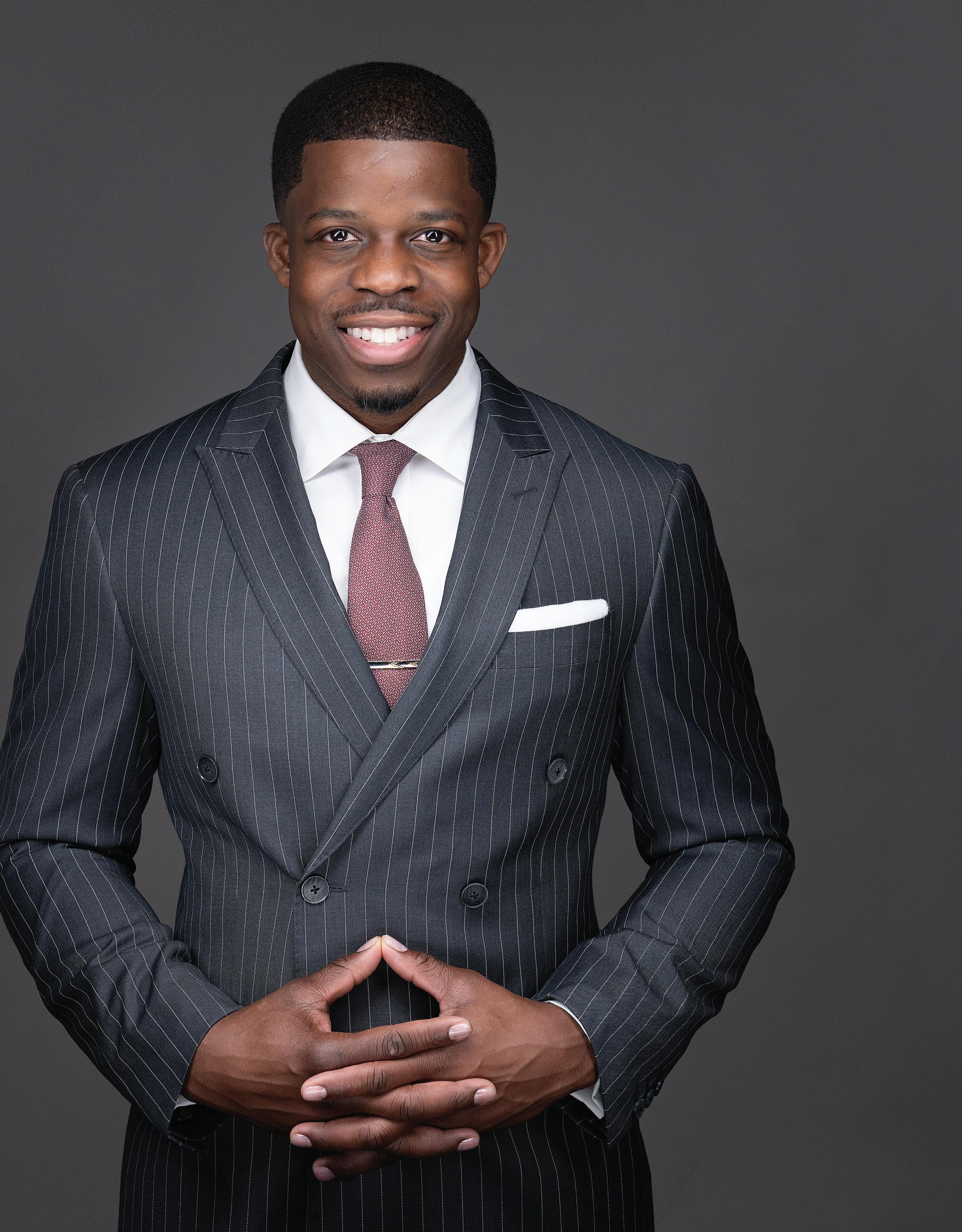
Brian Nwannunu, MD, MS, is an orthopedic surgeon specializing in hip and knee replacement. He care for patients at Texas Joint Institute in Allen and in McKinney, Texas.
Dr. Nwannunu, a native of Dallas, graduated Valedictorian from the High School for Health Professions at Townview Magnet Center in DISD. He then earned his bachelor’s degree in Biology at Morehouse College in Atlanta, Georgia, where he was part of the Morehouse College Honors Program. Upon graduation, he completed his master’s degree in Physiology at Georgetown University in Washington, D.C., with a concentration on complementary and alternative medicine. Dr. Nwannunu then graduated with his medical degree from Howard University College of Medicine in Washington, D.C., where he was inducted into the Alpha Omega Alpha Honor Medical Society.
Dr. Nwannunu completed his residency in orthopedic surgery at the John Peter Smith Health Network in Fort Worth, Texas, before pursuing additional training with a fellowship in adult reconstruction at Baylor College of Medicine in Houston, Texas. In addition to his clinical training, Dr. Nwannunu enjoys mission work abroad, providing medical care and health education to populations in need. He is also one of the few official Jiffy Knee™ surgeons in the North Texas area.
He is a member of the American Medical Association, National Medical Association, American Academy of Orthopaedic Surgeons and the American Association of Hip and Knee Surgeons.
When not working, Dr. Nwannunu enjoys basketball, weight training, outdoor activities, attending art and music festivals, traveling, world news, and reading.


The highly specialized doctors of Texas Joint Institute focus on complex reconstruction and total joint replacements serving the North Texas region. We have offices in seven communities to care for your needs including Sherman, McKinney, Allen, Plano, Frisco, Lakewood, Sachse, and Dallas. Our team includes board-certified and fellowship-trained surgeons in adult reconstruction (total joint replacement and revisions), orthopaedic oncology, orthopaedic trauma, and sports medicine surgery.
At Texas Joint Institute, we understand the importance of orthopaedic bone and joint health, and the impact it can have on your mobility and quality of life. We offer a comprehensive range of services from conservative arthritis treatments to surgical care. Our doctors are currently accepting new patients and specialize in joint health, total joint replacement and revisions, robotic and navigation-assisted total joint replacements, muscle-sparing total joint replacements, osteosarcoma, complex trauma, bones that fail to heal, ACL, and rotator cuff tears. For a more complete list of services, see below or visit our website.

• Joint replacement (hip, knee, shoulder, elbow)
• Joint revisions (hip, knee, shoulder, elbow)
• Anterior hip replacement
• Partial (unicompartmental) knee replacement
• Robotic and navigation-assisted joint replacement
• Minimally invasive total hip and knee replacement
• All orthopaedic trauma injuries/complex trauma
• Soft tissue, bone tumor or unknown masses
• Chronic osteomyelitis
• Bones that fail to heal/nonunion
• Bones that don’t heal properly/malunion
• Limb deformity
• All fractures
• Rotator cuff tears
• AC joint separation
• Shoulder and hip dislocation
• ACL, PCL, MCL, and meniscus tears
• Hip labral tears and CAM deformity
• Knee, hip, and shoulder arthroscopy
*This is not an exhaustive list of the services we provide.
When joint pain interferes with your daily life, it may be time to see a specialist.
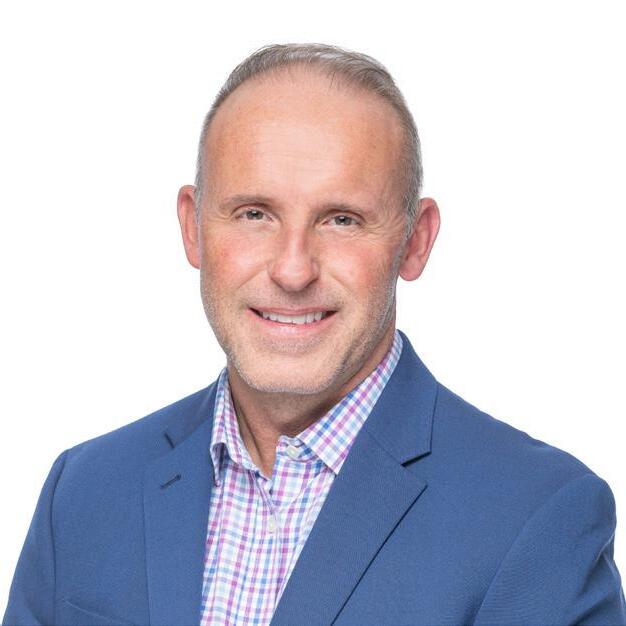
Terry K. Gemas, MD
Orthopaedic Surgeon Board Certified Lakewood office

Charles Toulson, MD
Orthopaedic Surgeon
Board Certified Allen, McKinney, & Sherman offices
Meet our team of Orthopaedic

Cyrus Abbaschian, MD
Orthopaedic Surgeon
Board Certified Dallas office

Donald Hohman, Jr., MD
Orthopaedic Surgeon Board Certified Dallas & Frisco offices

William Tucker, Jr., MD
Orthopaedic Surgeon
Board Certified Dallas office

Stephen Appleton, MD
Orthopaedic Surgeon Board Certified Dallas & Frisco offices

Duncan McKellar, Jr., MD
Orthopaedic Surgeon Board Certified McKinney & Sherman offices

Raj Yalamanchili, MD
Orthopaedic Surgeon
Board Certified Allen, Frisco, & Sherman offices

Florian Dibra, MD
Orthopaedic Surgeon Board Certified Frisco office

Brian Nwannunu, MD
Orthopaedic Surgeon Allen & McKinney offices

Kwame Ennin, MD
Orthopaedic Surgeon Board Certified
McKinney, Sachse & Plano offices

Samuel Stephenson, MD
Orthopaedic Surgeon Board Certified Allen, Dallas & Plano offices

Alexander Greenstein, MD
Orthopaedic Surgeon Board Certified Dallas & Plano offices

James Ryan, MD
Orthopaedic Surgeon Board Certified Dallas, Frisco, Plano, & Sachse offices
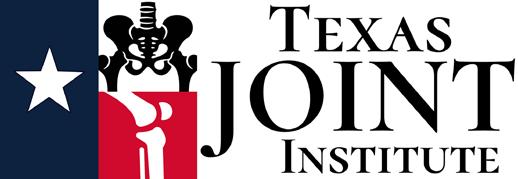

Southwest Foot & Ankle Center is a respected group of board certified foot and ankle surgeons. They are fellow trained surgeons, and board certified in wound care and reconstructive surgery. All physicians have also completed an intense residency and fellowship in the area of limb salvage, and foot and ankle surgery. The team at Southwest Foot & Ankle Center strive to make each patient’s experience personable. Our outcomes are of perfection and meticulous in surgery. As a result, patients from all over the country seek to be treated by DFW Wound Care Center.
MIS—Minimally Invasive Surgery
Heel Pain (Plantar Fasciitis) Stem Cell Therapy
Toenails

Custom Orthotics & Braces
Laser Therapy for Pain, Swelling, Arthritis, and Wounds




By ANNA REED

They carry you to the kitchen each morning, support you on evening walks through the neighborhood, and hold you steady through decades of life’s milestones. Yet, for all they do, feet are often the most ignored part of our bodies—until they demand attention.
For those of us entering life’s wiser decades, foot health is no longer just about comfort. It’s about mobility, independence, and preserving our quality of life.
When Foot Pain Isn’t Just “Part of Aging”
It’s common to assume that foot pain is just one more item on the aging checklist. But while it’s true that our feet change over time—arches can flatten, padding thins, joints stiffen—pain is not something you’re meant to endure. It’s a message. And it’s one that shouldn’t be ignored. Consider heel pain. A common culprit is plantar fasciitis, often felt as a stabbing sensation first thing in the morning. Left untreated, it can escalate to the point where every step is a challenge. Conditions like bunions or hammertoes may start small but can gradually deform your foot, limit your shoe choices, and reduce your mobility. And let’s not forget neuropathy, a numbing or tingling often associated with diabetes, which can lead to falls or wounds that won’t heal.
Here’s the truth: many of these conditions are manageable, and often treatable—especially when addressed early by a foot specialist. A good specialist doesn’t just treat the pain; they look for the source and provide a plan to prevent recurrence. That makes a world of difference when you’re trying to stay active and independent.
Few people realize just how crucial healthy feet are to balance. Your feet are your body’s foundation. If they’re unstable, it sets off a chain reaction. You might start compensating in your hips or knees, which throws off your posture and increases the risk of a fall.
Falls are no small matter. According to the CDC, one in four Americans aged 65 or older will experience a fall each year, often leading to serious injury. Sometimes the cause is simple: a loss of sensation in the feet, a painful joint, or an uneven gait—all things a foot specialist can evaluate and help improve.
Let’s talk shoes. It’s easy to keep wearing the same size and style you did 20 years ago, but our feet evolve over time. Arches flatten, toes may spread, and ligaments lose some elasticity. And yet, many people still try to squeeze into shoes that no longer suit their feet.
If your closet is full of stylish shoes that sit unused because they now hurt to wear, you’re not alone. But style and comfort don’t have to be mutually exclusive. Start by getting your feet measured once a
year. A proper fit—combined with features like arch support and a wider toe box—can prevent a world of problems.
A foot specialist can also assess how you walk and recommend custom orthotics if needed. These aren’t your grandmother’s shoe inserts—they’re designed to support your unique foot structure, improve posture, and ease pressure points.
Feet often give the first clues about other health issues. Discolored or thickened toenails might indicate a fungal infection or circulation problem. Cold, numb feet could be a sign of vascular disease. Ulcers or wounds that don’t heal might point to diabetes. These aren’t just cosmetic concerns; they’re early warning signs.
A foot specialist knows what to look for and when to investigate further. For example, they may catch signs of poor circulation before your primary doctor does, or notice a gait abnormality that’s causing hip pain. These small discoveries can lead to big improvements in your overall well-being.
Good foot health doesn’t require a major lifestyle overhaul—just intentional, consistent care. Wash your feet daily, dry them thoroughly (especially between the toes), and moisturize the soles and heels to prevent cracking. Check for any new calluses, blisters, or skin changes.
When sitting for long periods, elevate your feet to reduce swelling. Stretch your ankles and toes regularly to maintain flexibility. And if something hurts or looks suspicious—don’t wait. That’s exactly the moment to see a specialist.
Early care can make the difference between a small issue and a serious one. And there’s no shame in seeking help for your feet. You wouldn’t ignore back pain or blurred vision—why treat your feet any differently?
Your feet are your foundation. They’ve walked with you through every stage of life, carried the weight of responsibility, and kept you moving forward. As you enter your 50s, 60s, and beyond, they deserve attention, respect, and care.
Don’t wait until the pain stops you in your tracks. Whether it’s discomfort that won’t go away, changes in how you walk, or simply questions about what’s normal—consulting a foot specialist can keep you active, safe, and steady on your feet for years to come.
Because a strong foundation doesn’t just support the body. It supports your freedom.


Florian F. Dibra, MD is a board-certified, orthopedic surgeon located in Frisco, Texas who has extensive knowledge in hip and knee orthopedics and treats operative and non-operative hip and knee arthritis. He focuses on minimally invasive muscle-sparing total hip and knee replacement, anterior hip replacement, partial knee replacement, robotic joint replacement and complex hip and knee replacement revisions. Dr. Dibra is specialized in MagicKnee and MagicHip, muscle-sparing techniques with robotic technology.
Dr. Dibra graduated with honors from Villanova University in Pennsylvania. Soon after, he received his medical degree, with cum laude honors from the esteemed Jefferson Medical College in Philadelphia, Pennsylvania. He completed his orthopedic surgery training at the University of Florida. He continued at the University of Florida Health Hospital to complete his fellowship in Adult Arthroplasty with an emphasis in hip and knee reconstruction. During Dr. Dibra’s surgical training, he accomplished several publications, book chapters, and poster presentations.
Dr. Dibra’s family consists of his wife and two children. In addition to English, he is fluent in Albanian, Italian, and proficient in Spanish.

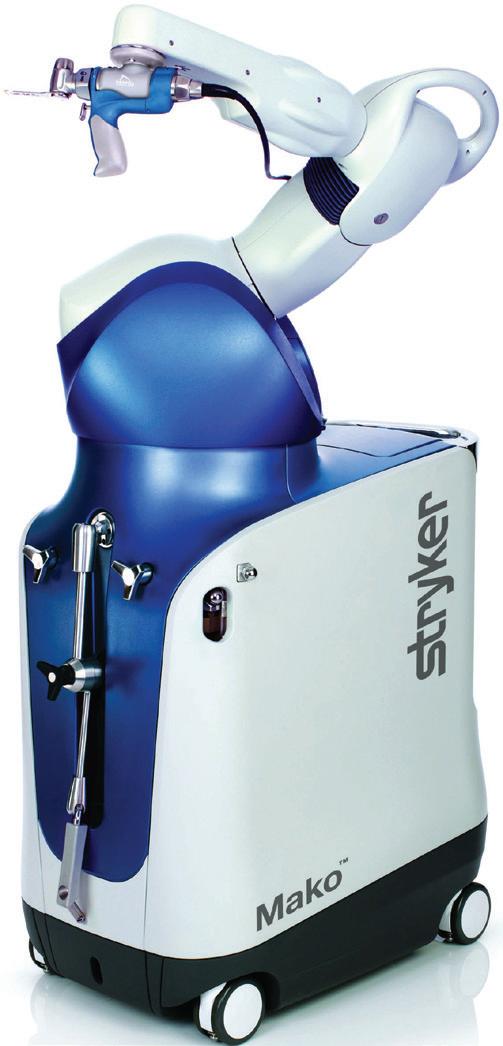


By RACHEL FOSTER
Are you feeling overwhelmed and stuck? We’ve all been there at some point: sitting at the edge of a task we know we need to do, maybe even want to do, yet somehow... we just can’t begin. Instead, we stare at the list, scroll our phones, reorganize the junk drawer—anything to avoid the one thing we promised ourselves we’d tackle today.
This isn’t laziness. It’s overwhelm.
Overwhelm is a shape-shifter. It can look like exhaustion, anxiety, perfectionism, or distraction. But underneath it all is usually one core feeling: This is too much, and I don’t know where to start. Once that mental wall goes up, it’s incredibly hard to scale. The more you stare at the thing you need to do, the heavier it gets. Before long, even the idea of starting feels impossible. But here’s the secret most productive people don’t talk about: they hit that wall too. They just learn how to gently climb over it instead of waiting for it to disappear. And you can, too.
The first step to moving through a mental block isn’t action— it’s awareness. Overwhelm thrives in vagueness. The more abstract your thoughts are, the more your brain spins in circles. Try asking yourself: What exactly feels overwhelming right now? Is it the size of the task? The fear of doing it wrong? Not knowing how to begin? Writing it down—yes, with pen and paper—can help bring clarity. When you see your thoughts in black and white, they become easier to manage. The mess in your mind turns into something you can work with.
One of the most common causes of mental paralysis is perfectionism. We imagine the final product—the flawless report, the spotless house, the perfectly worded email—and suddenly, nothing feels good enough to even begin. That vision becomes a trap. Instead, try shrinking the task. Lower the bar. Tell yourself you’re only going to do a bad version of it—just to get started. Write the messy first paragraph. Fold one shirt. Answer one email. Doing something—even poorly—creates momentum, and momentum creates motivation. You don’t need to tackle the mountain today. Just take one step.
When you’re juggling a dozen tasks in your mind, your brain doesn’t know where to focus, so it doesn’t. It freezes. Instead of trying to do it all, pick one thing. Not the most urgent or most important—just something small that you can complete right now. Finishing even a minor task can quiet the mental noise and give you a boost of confidence. You’ve already proven you can get something done. That’s a win.
Here’s a tough truth: waiting for motivation is a trap. It’s easy to believe we need to feel ready to start—but more often, starting is what creates that feeling. Think of your brain like an engine that needs a little warm-up. The first few minutes may feel clunky and uninspired, but once you begin, something shifts. The fog lifts, the ideas come, and what felt impossible starts to feel doable. So instead of waiting for motivation to strike, just start. Even if it’s awkward. Even if you don’t feel like it. Especially if you don’t feel like it.
Sometimes, the mental block has a physical root. Cluttered spaces can make your mind feel just as messy. Try taking five minutes to tidy your workspace or clear off your desk. Even small changes in your environment can signal to your brain that it’s time to shift gears. The same goes for mental clutter. If your thoughts are bouncing between errands, emails, and things you forgot to do last week, do a quick brain dump. Write down everything that’s on your mind. Get it out of your head and onto the page so you can focus on what’s in front of you.
In an age of constant pings, notifications, and background noise, focus is harder to come by—and more precious than ever. When you’re overwhelmed, even the smallest distraction can pull you off course. Create a distraction-free zone, even if it’s just for 25 minutes. Silence your phone. Close unnecessary tabs. Let others know you’re in “focus mode.” Set a timer if that helps—knowing you only have to concentrate for a short burst can reduce the mental resistance to starting.
Breaks are not a sign of weakness. They’re a sign that you understand how your brain works best. But not all breaks are created equal. Scrolling social media might offer a momentary escape, but it often leaves you feeling even more drained. Try a short walk, stretching, a few deep breaths by a window, or making a cup of tea. These kinds of restorative breaks help your mind reset and prepare to re-engage with the task at hand.
The voice in your head matters more than you think. When you’re behind, struggling, or stuck, it’s easy to turn on yourself. “Why am I like this?” “What’s wrong with me?” “I should have finished this by now.”
But shame doesn’t motivate—it immobilizes. Try changing the script. Talk to yourself the way you would to a friend. “I’m doing the best I can.” “This is hard, but I’ve done hard things before.” “One step at a time.” Kindness isn’t selfindulgent. It’s productive. It creates a safe space for your brain to take risks and try again.
When the starting point feels impossible, shift your focus to the end. Imagine the relief of clicking “send,” the satisfaction of a clean space, the pride of completing a project. Let that image pull you forward. Sometimes, it’s not the task itself that motivates us—it’s the feeling of having done it.
The biggest lie overwhelm tells is that it’s permanent. That you’ll always feel stuck. That this task will never get done. That your brain will be foggy forever. But it’s not true. This is just a moment. A hard one, yes—but temporary. You will move forward. You will get through the task. And with every wall you climb, you build the strength to tackle the next one a little more easily.
So if you’re staring at that mental block today—breathe. Pick one small thing. Begin badly. Be kind. Protect your focus. And remember: you’ve done this before. You’ll do it again. One step at a time.
Macular Degeneration
Diabetic Eye Disease
Retinal Vein & Artery Occlusions
Flashes & Floaters
Retinal Tears & Detachments
Macular Pucker/Epiretinal
Membrane
Macular Holes
Uveitis

At Texas Macula & Retina, our mission is to provide exceptional eye care with a focus on the diagnosis, treatment, and management of retinal disorders.
Dr. Adams is a board-certified Ophthalmologist and Ophthalmic Surgeon specializing in Vitreoretinal Surgery. His principal areas of interest include age-related macular degeneration, diabetic retinopathy, retinal detachment repair, macular surgery, retinal lasers, and secondary intraocular lens implantation.
Dr. Adams and his team are committed to preserving and improving the vision and overall quality of life for our patients by offering the most advanced and personalized retina care available. MATTHEW K. ADAMS, MD, MBA

(Before You Mistake Your Chihuahua for a Squirrel Again)
By MATTHEW K. ADAMS, MD, MBA
Let’s face it, aging is full of surprises. One day you’re reading the morning paper just fine, and the next you’re squinting at the toaster trying to figure out if that’s the bagel button or the nuclear launch code.
As a retina specialist here in North Texas, I spend my days helping people see clearly, and my nights wondering why so many folks wait way too long to get their eyes checked. So if you’re over 60, grab a glass of iced tea, pull up your recliner, and let’s go over the 10 signs you might want to give your friendly neighborhood retina doctor a call.
1. You Think the TV Remote is Your Phone

can be a sign of trouble in the retina. Unless you’re in a disco (which I respect), call us. Time is vision when it comes to treating a retinal tear or detachment.
If you’ve ever tried to answer your Roku remote like it’s your iPhone, don’t worry, we’re not judging. But if it’s happening because you can’t see it clearly, your eyes might be trying to tell you something.
2. Straight Lines Are Looking More Like Roller Coasters
No, your wallpaper isn’t warping, and your house isn’t haunted. Wavy, distorted, or “melting” lines can be a sign of macular degeneration, a common condition we see in our older patients.
3. You’ve Got More Floaters Than a Pool Party in July
A few floaters are normal. But if you suddenly see a storm of black specks, cobwebs, or flashes of light, especially if they come on quickly, you may have a retinal tear or detachment. That’s not a “wait and see” situation; that’s a “call us right now” kind of deal.
4. Reading the Menu Requires a Flashlight, Magnifying Glass, and Prayer
If dim lighting feels like the enemy and your reading glasses aren’t cutting it anymore, there could be more going on than just aging lenses. Conditions like cataracts or diabetic retinopathy can sneak up and blur your world.
5. You Keep Hitting the Curb, and Not in a Cool, Skater-Way
Peripheral vision loss isn’t just inconvenient, it can be dangerous. Whether it’s from glaucoma or a retinal condition, we can help before your mailbox gets taken out again.
6. Your Grandkids Keep Winning at Hide and Seek (and They’re Not Even Trying)
If you feel like you’re seeing less of your grandkids, not emotionally, but literally, your visual field might be shrinking. That’s worth a check.
7. Your Eyes Are Doing Their Own Light Show
Flashes of light that look like lightning bolts, sparkles, or camera flashes
8. You’ve Got a Family History of Eye Disease
High blood pressure, diabetes, and family history of vision problems? You’ve hit the genetic jackpot, my friend. Even if you feel fine, you need regular retina exams. Prevention beats laser surgery any day.
9. You’ve Started Adjusting Your Glasses…
But They’re Not on Your Face
We’ve all done the forehead glasses shuffle, but if you’re constantly struggling to see even with your prescription, something’s up.
10. You Just Have a Feeling Something’s Off
Call it gut instinct, intuition, or that voice in your head saying, “maybe I should get this checked out.” If you feel like your vision’s changed, even subtly, it’s always worth a quick check up.
So, What’s the Worst That Could Happen?
Here’s the thing: many serious eye conditions, including retinal tears, vein occlusions, and macular degeneration, can be treated if caught early. But if you wait too long? That Sunday crossword might be replaced with blank stares and blurry shapes for the rest of your life.
At Texas Macula and Retina, we specialize in helping seniors across North Texas keep their vision sharp, so you can keep enjoying sunsets, grandkid selfies, and the fine print on your prescription bottles (which, let’s be honest, could be bigger).
Don’t Let Your Vision Take a Backseat
If any of these signs sound familiar, or if you just want peace of mind, come see us. We promise not to lecture you (too much), and we’ll make sure your eyes are in good shape for the road ahead. And yes, we do have big-print magazines in the waiting room. Because whether you’re 65 or 95, good vision is key to living independently, confidently, and joyfully. Call Texas Macula and Retina today and let’s keep your future in focus.


• Comprehensive Adult Eye Care
• Light Adjustable Lens, Odyssey™, Symfony®, PanOptix, Vivity® and the Eyhance IOL
• Management of Dry Eye, Glaucoma & Corneal Disease
• Eyelid Surgery & Botox®
• Laser Vision Correction, EVO ICL™



Convenient locations to serve you in Allen, Arlington, Dallas, Frisco, Greenville, McKinney, Mesquite, North Fort Worth, Plano, Richardson, and Rockwall.
www.keywhitman.com







VUDHI SLABISAK, MD OrthopaedicSpineSurgeon





BRUCE MARKMAN, MD OrthopaedicSurgeon&Sports MedicineSpecialist


JAMES STANLEY, MD OrthopaedicSpineSurgeon





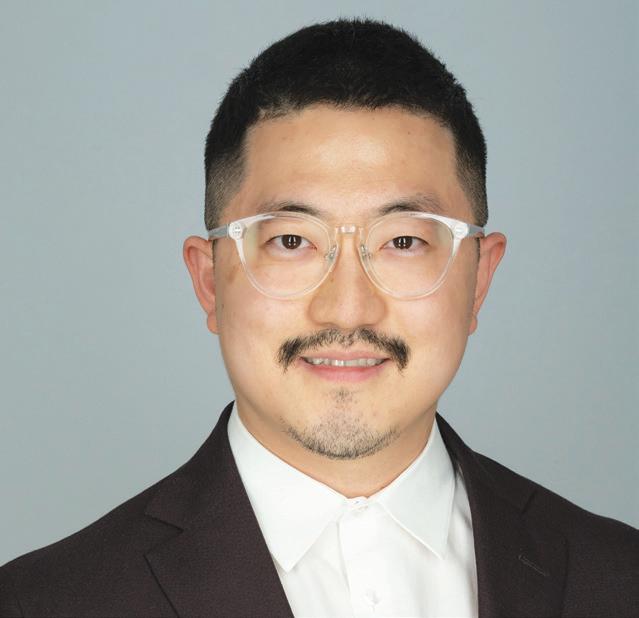

STEVE HONG, MD Interventional Pain ManagementSpecialist








RAHUL BANERJEE, MD OrthopaedicSurgeon

GEOFFREY G. GLIDDEN, MD OrthopaedicSurgeon










AMIR MALIK, MD Neurosurgeon





KHAWAJA IKRAM, DO OrthopaedicSurgeon


BRIANA HODGSON, PA-C OrthopaedicSurgery PhysicianAssistant

CHARLES MARDER, DPM Podiatrist,Foot&AnkleSurgeon
If you’re suffering from pain or an athletic injury, schedule an appointment with your preferred NTOS location for effective, compassionate treatment.
By SONDRA BARR
Noah Wyle never intended to wear a stethoscope again.
After his record-setting, 254-episode run as Dr. John Carter on ER—a role that made him a household name and earned him Emmy and Golden Globe nods—he vowed to steer clear of any medical role that might seem like déjà vu. But then the world changed. And so did Wyle.
“I wasn’t working. Nobody was working,” Wyle told PBS News’ Geoff Bennett. “And I get a lot of my sense of balance from going to work every day and being creative... I didn’t realize how much I really needed that until I didn’t have an opportunity to do it.”
During that same time, Wyle started receiving messages from healthcare workers who had found inspiration in ER. Some had chosen medicine because of Dr. Carter. Others, deep in the trenches of COVID-19, were simply reaching out in desperation. “They were saying things like, ‘Carter, where are you?’” he recalled in Variety. “‘It’s really hard out here.’”
Those messages lit a spark. The result? The Pitt, a gritty, real-time medical drama streaming on Max, where Wyle stars as Dr. Michael “Robby” Robinavitch—and also serves as executive producer and writer.
“I felt a certain responsibility to continue to be part of their medical journey,” he told Katie Couric. “Every show after COVID needed to reflect those radical changes. And I hadn’t really seen one yet do that.”
Unlike most series, The Pitt doesn’t rush through plot points. Each of its 15 episodes unfolds over a single hour, following one relentless shift in the ER. There’s no music score to manipulate emotions, just raw, fluorescent-lit reality. “It feels more like doing a play,” Wyle said to PBS. “It feels very live.”
Authenticity was non-negotiable. Cast members underwent a two-week medical bootcamp—“They went home with their suture kits and sewed up chickens,” Wyle told Couric—and the writing team shaped episodes around real-world interviews with medical professionals. “We ask, ‘What’s not on TV that needs to be?’” Wyle explained to PBS. “Then we take what we’ve got and somehow end up with a show.”
This commitment to realism extends to the emotional terrain as well. One of the season’s most talked-about moments is Dr. Robby’s quiet breakdown, where he crumbles under the weight of his own unprocessed trauma. “That breakdown scene was why I wanted to do the show,” Wyle told Variety. “I just invited the world to watch it.”
It’s a moment that resonates with Wyle’s own journey—one that’s been deeply shaped by empathy and activism.

I KNEW SO MANY PEOPLE MORE DESERVING OF THE SUCCESS.
Born in Hollywood to an orthopedic nurse mother and an engineer father, Wyle was raised in a house steeped in art and social awareness. “Our house was a bit of a salon,” he said in an interview for The Thread. “We were always being taken to the theater or gallery openings… I was marinated in a cultural soup that I didn’t even know I was being marinated in.”
He caught the acting bug during a high school play. “It was the first time somebody outside my family told me I was good at something,” he recalled in The Thread. “And I just chased that dopamine hit for the next 45 years.”
Success came early and fast. He was just 22 when ER premiered. “I used to say I was living in an apartment with a cat and a ficus, and I walked off that show 15 years later, married with two kids,” Wyle told The Thread. “Jumped on one train, one man got off the train. Totally different guy.”
But fame also came with a side of imposter syndrome. “I knew so many people more deserving of the success… I immediately thought, I need to democratize this success, amortize it among everybody that I know in order to feel a bit more deserving of it,” he said in the same documentary.
That drive to give back stuck. Over the years, Wyle has lent his name, time, and heart to causes ranging from animal rescue to international human rights. After witnessing Human Rights Watch’s efforts in Macedonia to document war crimes during the Balkan conflict, he joined their California board. “It was law and medicine working hand in hand to bring justice,” he recalled in The Thread. “And I really loved the way they conducted those interviews.”
He’s also a long-time supporter of animal rights, inspired in part by actor and activist James Cromwell. “I had this big piece of property... so I was taking all these animals that were being rescued off of highways,” Wyle shared. “I had cows and chickens and pigs and emus.... And I still have a few.”
These days, Wyle lives atop a mountain with his wife— “a Capricorn,” he jokes to The Thread and their animals. “When you’re born with the name Noah, kind of goes with the territory.”
At 54, Wyle finds himself not only back in scrubs, but also at the helm of one of the most acclaimed shows of his career. “It’s been amazing to just have the perspective of longevity and to be able to be a resource,” he told PBS. “If anything, I’m just trying to boost their confidence, alleviate their anxieties, and remind them that this is a different type of show. You can paint with a much finer brush because we are all links in a chain.”
Still, not everything has gone smoothly. A potential revival stalled due to legal disputes with Michael Crich ton’s estate. “I’ve never felt less celebratory of that achievement than I do this year,” he admitted to riety. “It taints the legacy, and it shouldn’t have.”
But the setback led to unexpected creative free dom. “We pivoted as far in the opposite direction as we could in order to tell the story we wanted to tell,” he said. “Not for litigious reasons, but because we didn’t want to retread our own creative work.”
With The Pitt, he’s doing more than revisiting old territory—he’s reimag ining it through a lens shaped by experience, intention, and deep compassion. “It’s been the most gratifying thing I’ve ever done in my life,” Wyle told “It really has been a dream.”
And for Wyle, living well means more than success—it means being of service, telling stories that matter, and giving voice to those who too often go unheard. Wheth er in scrubs or not, he’s still answering the call.
AND I JUST CHASED THAT DOPAMINE HIT FOR THE NEXT 45 YEARS.


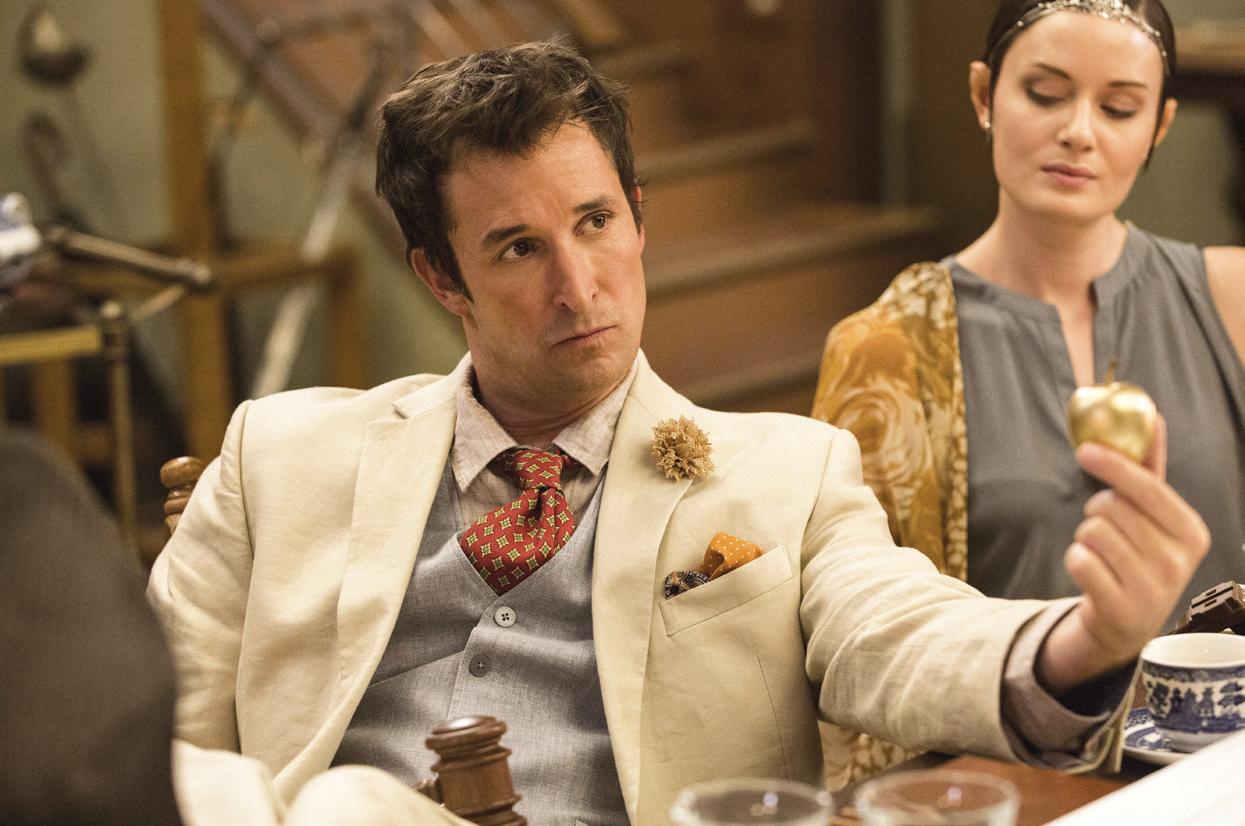

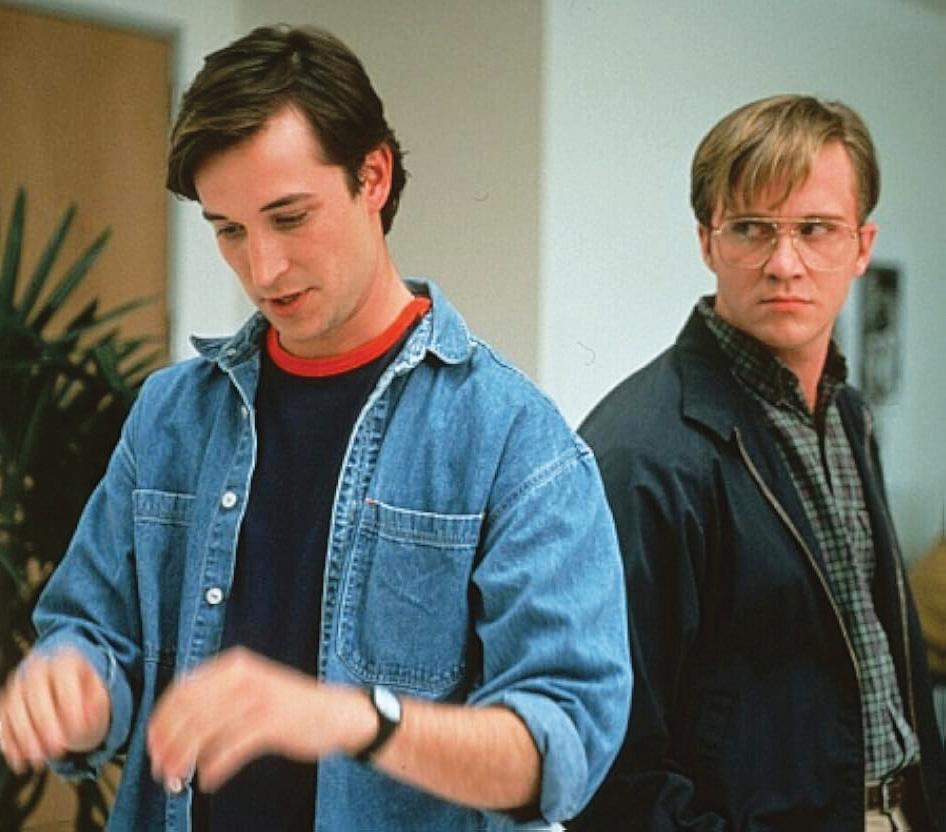


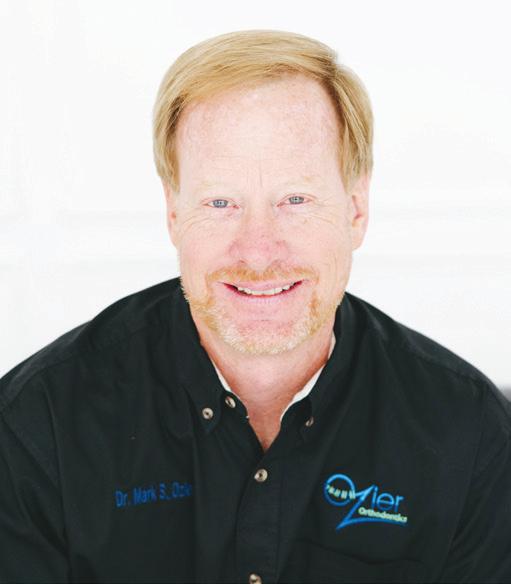


Robert Brunner, MD is a general urologist with Urology Clinics of North Texas serving patients in our Dallas office located at Texas Health Presbyterian Hospital Dallas. A native of Toledo, Ohio, Dr. Brunner combines a robust academic foundation with extensive clinical expertise. He graduated magna cum laude from the University of Notre Dame, earning dual degrees in Economics and PreProfessional Studies. He then earned his Doctor of Medicine (MD) degree from the University of Toledo College of Medicine and Life Sciences, where he was inducted into the prestigious Alpha Omega Alpha Honor Medical Society.
Following medical school, Dr. Brunner completed his residency in Urology at Baylor College of Medicine in Houston, Texas, where he received comprehensive training in all aspects of adult urology. He developed specialized expertise in the management of stone disease and in the use of robotic-assisted surgery, particularly with the Da Vinci robotic system. Dr. Brunner is skilled in treating a wide range of both benign and malignant urologic conditions, with a particular focus on leveraging advanced robotic technologies to improve surgical outcomes and accelerate patient recovery.
Committed to providing exceptional care, Dr. Brunner is passionate about staying at the forefront of urologic advancements, ensuring that his patients benefit from the latest techniques and innovations in the field.

• Bladder Cancer
• Blader Stones
• Enlarged prostate or benign prostatic hyperplasia (BPH)
• Erectile dysfunction
• Kidney stones
• Low Testosterone
• Male sexual dysfunction
• Overactive bladder
• Penile curvature or Peyronie’s disease
• Prostate Cancer
• Stress urinary incontinence (Male & Female)
• Testicular Cancer
• Ureteral Cancer
• Ureteropelvic juncion (UPJ) obstruction
• Urethral stricture
• Urinary retention
• Urinary tract infection (UTI)
PRIMARY OFFICE LOCATION: Urology Clinics of North Texas 8230 Walnut Hill Lane, Prof. Bldg. 3, Ste. 700, Dallas, TX 75231 (214) 691-1902 | urologyclinics.com


» Staffed by 2 Licensed, Doctors of Audiology
» Hearing Aid Fittings, Maintenance and Repairs
» Invisible Fittings/Open Fittings
» Evaluation Period On All Hearing Aids
» Hearing Evaluations For All Ages
» Wireless/Connectivity Hearing Solutions
» Battery Purchase Programs
» Custom Ear Protection
» Assistive Devices


Courtesy HEARING SERVICES OF McKINNEY

Summer is a time for new sights, new experiences, and wellearned vacations. But for those who live with tinnitus—a condition marked by ringing, buzzing, or humming in the ears— air travel can introduce more than excitement. The stress of flying, coupled with noise and pressure changes in the cabin, can make tinnitus symptoms feel louder or more intrusive. The good news is that with a little preparation, you can manage these challenges and enjoy your journey with greater comfort.
Tinnitus is the internal perception of sound when no external noise is present. It might sound like a whistle, static, rushing air, or even a faint tone. Often, it’s linked to inner ear damage, chronic exposure to loud noise, infections, or side effects from certain medications. Though not a disease in itself, it is frequently a sign of an underlying issue. The American Tinnitus Association reports that nearly 25 million people in the U.S. experience tinnitus to some degree— making it a common, yet uniquely frustrating, condition.
While tinnitus can persist on a daily basis for some, air travel has a way of making it worse. This often happens due to changes in air pressure as the plane ascends and descends. Normally, small passageways called eustachian tubes help equalize pressure between the inner ear and the environment. But if these tubes struggle to adjust during flight, it can cause pressure imbalances that affect hearing— and in turn, make tinnitus seem louder or more bothersome.
Another factor is noise exposure inside the plane itself. Aircraft engines generate high levels of continuous noise, which can reach up to 100 decibels depending on your seat location. That kind of sound environment can fatigue the auditory system, especially for someone already dealing with sensitive ears. Add in the stress of travel, disrupted sleep, or dehydration, and it’s easy to see why tinnitus symptoms may spike midair.
The first and best defense against in-flight discomfort is a solid strategy. One smart investment is a pair of noise-canceling headphones. These reduce the hum of the plane and let you play soft background sounds or music, which can help mask your tinnitus and make the flight more pleasant. Calming playlists, ambient sounds, or even white noise apps can shift your focus away from the internal ringing.
Seat selection may also play a role. If you can, choose a spot toward the front of the plane—areas farther from the engines tend to be quieter. It’s also a good idea to skip standard foam earplugs, which may worsen pressure issues. Instead, look for pressure-regulating earplugs that are designed specifically for air travel. These help your ears adjust to altitude changes more gradually and reduce strain on the eustachian tubes.
During takeoff and landing—when the most pressure changes occur—it helps to stay awake and engaged. Actions like chewing gum, yawning, swallowing, or sipping water encourage the eustachian tubes to open, allowing pressure to equalize more effectively. If you’re prone to nasal congestion or seasonal allergies, consider asking your doctor if a decongestant is appropriate to use before your flight.
Keeping your brain occupied is another helpful tool. Distraction can lower the intensity of tinnitus simply by redirecting your focus. Bring along a few favorite audiobooks, light movies, puzzles, or games. You might also try breathing exercises or guided meditation through an app to keep your mind calm and grounded. Anxiety tends to make tinnitus worse, so anything that helps you stay relaxed will pay off in the air.
It’s also important to prepare your body for the trip. Get a good night’s rest before travel, stay hydrated, and skip caffeine and alcohol on flight day. These small habits can reduce the chances of a flare-up. And if you use hearing aids, don’t hesitate to wear them on the plane. Some models offer features that help reduce internal noise perception and support more natural hearing in loud environments.
If flying consistently brings on tinnitus flare-ups or makes travel stressful, it may be time to talk with a hearing care professional. A full hearing evaluation can help identify contributing factors and provide tailored recommendations—from sound therapy tools to pressure management techniques—that make flying more comfortable.
If your travel plans are being overshadowed by ear discomfort, the team at Hearing Services of McKinney is ready to help. From personalized evaluations to travel-friendly hearing solutions, their experienced professionals can guide you toward relief. Call today to schedule a consultation and take the first step toward quieter skies.


OLIVIA ROGERS , RN, BSN, CHPN, CHPO, MBA, is a leading voice in health care and senior services and the Vice President, Chief Nursing Officer of VNA Texas.
Dear Olivia,
I’ve been caring for my mother since her health started declining, and I’m feeling completely overwhelmed. At her last doctor’s appointment, they mentioned palliative care, home health services, private duty nursing, and hospice as options, and now I’m confused about what would actually help Mom the most. I don’t understand the differences between these services or when each one would be appropriate for her situation. Can you please help me make sense of all these care options so I can make the best decision for my mother? I’m exhausted and feeling lost about what to do next.
~Care Option Overload
Dear Care Option Overload, Care options have indeed become very complicated! The Visiting Nurse Association is here to help. Here is a brief summary of each one. Home health is appropriate for rehabilitative services when someone is too ill, has just had surgery or a procedure, or has another disability that does not allow them to leave home for therapy. The goal here is to improve their




VNA



health and function. Private duty services, delivered through a nurse or home health aide, are appropriate when a person needs help with activities of daily living such as bathing, dressing, medication management, housekeeping, or other personal care services. Palliative care, or what VNA calls Supportive Palliative Care, is needed when a person has a serious or complex illness that requires symptom management. The person may or may not be at the end of life, but they need help to alleviate suffering. This care is delivered by a comprehensive team; VNA’s Supportive Palliative Program is called Care Choices. Likewise, hospice services are delivered by a comprehensive team to alleviate suffering. Hospice Care is specifically for those nearing the end of life. Hospice provides support to not only the patient but the entire family. The goal of hospice is symptom management and holistic, patient-centered care that meets the needs of the whole person at the end of life. I hope this very brief summary helps!
~Olivia

Focuses on quality of life for the patient and family at a time when comfort, compassion and clinical expertise matter most.
To schedule your free in-home informational visit please call (214) 689-0000 or email gethelp@vnatexas.org For volunteer opportunities please call (214) 689-2271 or email volunteer@vnatexas.org


By MICHAEL TURNER
At some point in midlife, it hits you. Maybe it’s the fourth set of wine glasses that doesn’t fit in the cabinet, or the box of gadgets in the garage labeled “Just in Case.” Maybe it’s the antique bread machine you never used but moved three times. Whatever the trigger, the realization is universal: we’re full. Full of stuff, full of storage bins, full of “what was I thinking?” purchases.
And yet, what do most of us never regret? That impromptu weekend road trip to the coast. The concert under the stars. The cooking class where you and your partner discovered both a new pasta recipe and the joy of laughing at each other in aprons. These moments don’t collect dust—they collect value.
The idea of investing in experiences over things isn’t just a whimsical Pinterest quote or a minimalist’s manifesto. It’s backed by research. A 2014 study published in the Journal of Positive Psychology found that people reported greater happiness from experiential purchases—such as vacations, concerts, or special meals—than from material ones. In fact, the anticipation of an experience alone can produce more happiness than the actual purchase of an item.
It makes sense when you think about it. Stuff depreciates. That designer handbag? Out of fashion next season. The latest tech gadget? Replaced by something shinier before you’ve even memorized your password. But memories have a sneaky way of gaining value over


time. That sunset you watched on a mountainside, breathless and content? It doesn’t go obsolete. If anything, it becomes richer, funnier, more meaningful in the retelling.
Of course, this isn’t to say there’s anything wrong with loving beautiful things. A cozy reading chair or a treasured family heirloom absolutely has its place. But many of us are drowning in more than our fair share of “might-need-this” clutter. And midlife offers a unique opportunity—a kind of emotional inventory—to reassess what we really need.
If you’re ready to shift from collecting things to collecting memories, you don’t have to travel far. Dallas and Collin counties are packed with opportunities to enjoy meaningful experiences—many right in your own neighborhood.
Start with local event calendars like VisitDallas.com, VisitMcKinney.com, or VisitDowntownPlano.com. These sites regularly feature community festivals, outdoor concerts, wine walks, and food events— perfect excuses to get out and try something new.
Want something more hands-on? Take a class. You can try your hand at pottery in Wylie, sign up for painting nights in Frisco, or learn to cook something fabulous at Central Market or Sur La Table. You’ll walk away with new skills—and maybe a good story or two.
Don’t overlook the beauty and charm in your own backyard. Spend a day wandering the Dallas Arboretum, take a peaceful hike at the Heard Museum & Wildlife Sanctuary in McKinney, or explore historic downtowns like Grapevine or Celina, where local shops, wineries, and murals make for a great afternoon.
If you’re looking for inspiration on the go, download apps like Eventbrite, Meetup, or Airbnb Experiences. These are gold mines for pop-up events, group adventures, and one-of-a-kind outings hosted by locals who love sharing their passions.
Finally, join a club or community group. Whether it’s a walking group in Plano, a book club in Allen, or a wine tasting night in Dallas, connecting with others makes every experience richer—and builds lasting connections along the way.
Investing in experiences doesn’t have to mean jet-setting around the globe. Local concerts, weekend getaways, a class at the community center, or even planning a family “staycation” with themed dinners and board games can all offer meaningful returns on your investment. What matters is the intention behind it: the choice to be present, engaged, and curious.
And if you need one more nudge: experiences are notoriously hard to re-gift.

By SAMANTHA BROOKS
They raised you. Held your hand through skinned knees, school plays, heartbreaks, and hard lessons. They were strong, capable, the ones who seemed to know how the world worked. But now, the roles have quietly shifted—and not without turbulence. You see the red flags: missed medications, strange bruises, spoiled food in the fridge, bills unpaid. You worry about the stove left on, the stairs climbed in the dark, or the long drives that feel more perilous with every mile.
And yet, when you bring it up—gently, lovingly—they resist. They insist they’re fine. That you’re overreacting. That it’s their house, their life. What happens next often feels less like caregiving and more like a tugof-war. But beneath it all is something powerful: love. Messy, exhausting, enduring love.
If you’re navigating the delicate—and at times heartbreaking—reality of caring for a parent who is resistant to help while making unsafe choices, you’re not alone. This emotional terrain is both common and complicated, especially for those already juggling careers, children, and personal challenges of their own. It can feel like you’re carrying too much, stretched too thin. And still, you press on—because they’re your parent.
So how do you care for someone who doesn’t want to be cared for? How do you help without overstepping? And what do you do when their choices are putting them in danger?
One of the most important first steps is to understand what’s behind your parent’s resistance. Often, it’s not about being stubborn—it’s about fear, pride, or grief.

Losing independence is one of the hardest emotional transitions in life. Accepting help might feel like surrendering autonomy or admitting weakness. Many older adults associate care with decline, or with being seen as a burden. Others might fear losing their home or privacy. And for those with early cognitive decline, the situation becomes even more layered and fraught.
That resistance, however, doesn’t erase the very real risks. Falls, medication errors, isolation, and poor nutrition are among the leading causes of decline—and they often go unaddressed until a crisis occurs.
It’s tempting to dive straight into solutions—hiring help, installing safety equipment, taking away the car keys. But often, the most powerful tool you have is conversation. Not a lecture, but an honest and compassionate dialogue.
Try starting with curiosity. Ask how they’re feeling, what they’re worried about, what they want. Validate their fears instead of rushing past them. Avoid language that sounds controlling or condescending, and instead frame your concerns in terms of care and respect.
Phrases like “I’m not trying to take away your freedom—I’m trying to help you stay safe and independent for as long as possible,” can shift the tone dramatically. Remind them you’re on the same team, not opposing sides.
You won’t win every disagreement—and trying to control everything can fracture the relationship. Instead, prioritize the most urgent safety

issues. If your parent occasionally wears mismatched clothing, it might not be worth the emotional cost of a confrontation. But if they’re mixing up medications or wandering at night, those are red lines.
Start small. Introducing a part-time housekeeper or meal service might be easier to accept than a live-in caregiver. Sometimes easing into support makes the bigger changes feel less overwhelming.
Sometimes, you’re just too close. Hearing hard truths from a child can be more difficult than hearing it from a neutral third party. This is where professionals can be incredibly valuable.
Primary care physicians, home health nurses, social workers, or elder care specialists can provide assessments and guidance in a way that feels more objective and less personal. Hearing “Your daughter is right” from a doctor often carries more weight than any number of well-intentioned lectures from you.
It’s also wise to familiarize yourself with community resources. Many regions offer elder care support programs, transportation services, adult day centers, and in-home assessments. The Administration for Community Living (ACL.gov) and the National Association of Area Agencies on Aging (n4a.org) are good starting points.
There’s no manual for this part of life. No guidebook for how to balance your parent’s needs with your own marriage, your job, your health, your kids. And one of the most damaging myths is that you’re supposed to do it all. You are not failing if you need help. You are not selfish if you’re exhausted. You are not unloving if you say, “I can’t do this all by myself.”
Set realistic limits. Be honest about what you can do and where you need support. If your parent refuses help but won’t allow anyone else to step in, you might need to make peace with letting some consequences unfold. As painful as that sounds, enabling unsafe behavior can be more harmful in the long run.
Taking breaks, getting enough sleep, and caring for your own emotional well-being isn’t a luxury—it’s essential. You can’t pour from an empty cup.
When your parent is consistently making dangerous decisions and refuses help, and you have genuine concerns about their capacity, you may need to explore legal options. A medical evaluation can help determine whether they’re still able to manage their affairs.
If cognitive decline or a medical condition is affecting their judgment, you may need to consider powers of attorney, guardianship, or conservatorship. These are not decisions to make lightly—but they exist for situations where a loved one’s safety is genuinely at risk.
It can also be wise to have conversations about advance directives, living wills, and health care proxies before a crisis occurs. These documents offer clarity during medical emergencies and ensure that your parent’s wishes are honored.
It’s easy to let frustration and fatigue take center stage. But underneath it all, this is a season shaped by deep emotion—grief for what’s changing, fear of what’s coming, and an ache to do the right thing.
Some days, your patience will wear thin. Some days, guilt will creep in. Some days, you’ll just need to sit in the car and cry. That’s okay. That’s normal.
But as much as this journey demands of you, it also has the potential to be a time of connection, healing, and even unexpected beauty. A walk around the block. A shared memory. A rare laugh. These moments don’t solve everything—but they anchor you in what matters.
You’re not alone in this. There are millions walking this path alongside you. Reach out. Ask for help. Give yourself the same grace you’re trying to extend to your parent.
And remember: love, even when it’s complicated, is still love.


By RICK ALLEN
It’s something most of us don’t like to think about, much less talk about. Death, and everything that comes after, tends to linger in the background of life—uncomfortable, unknown, and easily pushed aside for another day. But there’s a quiet kind of grace in facing it head-on, especially when it comes to planning your own farewell.
Funeral pre-planning may not be a topic that comes up over coffee with friends, but for many, it becomes one of the most meaningful gestures they leave behind. Not because it’s about choosing caskets or selecting hymns, but because it’s an act of love, of intentionality, and of easing the emotional and logistical weight from those we leave behind.
When a death occurs, especially if it’s unexpected, families are often thrust into a whirlwind of decisions at a time when clarity is in short supply. Grief has a way of distorting time, scrambling priorities, and making even the simplest tasks feel monumental. In the midst of mourning, loved ones are asked to make dozens of decisions quickly: burial or cremation, type of service, location, music, readings, obituary details, and more. Each choice can carry emotional weight, and without guidance, families may struggle with second-guessing what their loved one would have wanted.
That’s where pre-planning becomes a deeply human act and a thoughtful gift to your loved ones. It’s not about morbid obsession or controlling details from beyond the grave—it’s about clarity. It’s about answering questions in advance so that those left grieving can focus on remembering and healing, rather than coordinating logistics.
Pre-planning can be as simple or detailed as you choose. Some of the people I’ve worked with outlined not just what kind of service they’d like, but included the stories or memories they hope will be shared. These gestures can feel like a roadmap, or even a final conversation—a way of saying, “I thought about you.”
One of the most overlooked parts of funeral pre-planning is the emotional relief it offers. It transforms an experience that can feel overwhelming into one rooted in intention. Families who have a clear plan to follow often speak of the peace it brings. They’re not left debating what to do; they’re carrying out a final act of care that was already put into motion.
There are also financial considerations. Funerals can be costly, and making decisions in the fog of grief often leads to overspending out of guilt or urgency. When a plan is in place—especially one that includes prepaid arrangements—it removes the pressure to make fast financial choices. It also minimizes the chance of family disagreements, which can surface when siblings or spouses have different ideas of what a loved one would have wanted.
Some may worry that making plans now feels premature or unnecessary, especially when in good health. But planning a funeral isn’t about predicting when the end will come. It’s about recognizing that, whenever it does, the people we love will be the ones left to navigate the moment. Leaving them with direction is one final way of showing we care.
What surprises many people as they go through this process is how comforting it becomes. Thinking about death often invites reflection on life—on what’s mattered, what kind of legacy one wants to leave, and how they hope to be remembered. Choosing a reading, a song, or even a poem for a future service can become a personal meditation on meaning. In that way, pre-planning is as much for the living as it is for the departed.
In the end, pre-planning a funeral isn’t about death. It’s about easing the path for those who will one day say goodbye. It’s about transforming one of life’s hardest moments into one marked by clarity, calm, and love.
There’s no perfect time to start thinking about these things, but there is always value in beginning. You don’t need all the answers. If you’re ready to take the first step or simply want to explore your options, Allen Family Funeral is here to help with care, clarity, and compassion. Our experienced team can guide you through every aspect of pre-planning—at your pace and on your terms—so you can create a service that truly reflects your life and values. Reach out today to begin a conversation that offers peace of mind for tomorrow.
If we can leave behind a map, even a simple one, it becomes easier for those we love to find their way through the fog. And that may be one of the most generous things we ever do.

By OLIVIA GRANT
There’s something deeply reassuring about having a doctor or health care professional you genuinely trust. Whether it’s a physician who listens without rushing, a nurse who remembers your family’s names, or a specialist who helped you through a difficult diagnosis, these relationships often shape some of life’s most vulnerable and important moments. For many people, gratitude for their doctor runs deep—but when it comes to expressing that appreciation, it’s not always clear where to start.
A heartfelt “thank you” goes a long way. In the middle of a packed waiting room, during a follow-up appointment, or even through a simple note, acknowledging a health care provider’s dedication can brighten their day more than you might imagine. Many physicians carry the emotional weight of their patients’ struggles, successes, and fears. A sincere word of thanks is more than polite—it’s uplifting and affirming.
If you’re looking to go beyond a spoken thank-you, consider writing a handwritten card. In these digital times, a physical note stands out. Keep it simple and personal—share how their care made you feel or how it made a difference. You don’t need to use big words or write a long letter. Just speaking from the heart is enough. Health care professionals often keep these kinds of notes for years. They’re reminders of why they chose their path in the first place.
Another impactful way to show appreciation is by leaving a public review. Google, Yelp, and even health care-specific platforms like Healthgrades or Zocdoc can be great places to let others know about the positive experiences you’ve had. These reviews are often what someone sees when they’re searching for a new provider. Your honest words might help another person feel more confident walking into their first appointment.
Don’t underestimate the value of sharing your praise within your local community, too. Our region, including this magazine, hosts annual “Top Doc” or “Best of” polls and casting a vote for a trusted provider is another meaningful way to show your appreciation. These local honors often reflect the voices of real patients, not just professional peers, and they can be a boost for a doctor’s morale and reputation. It’s one more way to say, “You made a difference in my life—and others should know.”
If your health care provider works as part of a larger clinic, hospice provider, practice, or hospital system, you might also consider sending a note to their supervisor. A quick email or letter recognizing exceptional care—whether it was a physician, nurse, medical assistant, or front desk staff—can reinforce a culture of kindness and attentiveness within that organization. Professionals who consistently go above
and beyond deserve to be recognized not just by patients, but within their own workplace as well.
For those who are more active on social media, a simple shoutout (while respecting privacy and avoiding sharing personal medical details) can also have a ripple effect. Mentioning your gratitude for great care and tagging the clinic or organization helps amplify your appreciation while encouraging others to consider the provider you value so highly. Just be sure to keep any identifying medical information private—your kind words don’t need to include specifics to be meaningful.
Of course, not all thanks have to be written or spoken. Referring friends and family to your trusted provider is one of the most powerful compliments you can offer. If someone you know is looking for a new doctor, specialist, or therapist, sharing your positive experience can ease their concerns and help them find a good fit. Word-ofmouth is a powerful force in building trust, especially in matters as personal as health.
And if you’re ever inclined to show appreciation through a small gesture—perhaps a thank-you card during the holidays, a coffee gift card, or a treat left at the front desk—it’s always appreciated. Just check ahead to make sure gifts are appropriate or allowed under clinic policies. Often, a plate of cookies for the office staff or a bouquet for the front desk brightens everyone’s day and lets them know their kindness hasn’t gone unnoticed.
The truth is, health care can be a demanding and emotionally intense field. Providers carry so much on their shoulders, often beyond what patients can see. A few moments of acknowledgment, a thoughtful word, or a public vote of confidence can offer real encouragement. You don’t need to wait for a major occasion— sometimes the best thank-you is the one given in the quiet after a routine visit or a follow-up call that reminded you someone’s looking out for you.
If there’s a doctor, nurse, or care provider who has supported you with skill, compassion, and grace, don’t keep it to yourself. Say thank you—and let the world know how much that care meant to you.
Dr. Courtney is a board-certified orthopedic spine surgeon located in Plano, Texas. A Louisiana native, he attended Louisiana State University for medical school, and completed residency at Texas A&M followed by a fellowship at the Florida Neck and Back Institute.
SPECIALTIES:
• Back Pain
• Neck Pain
• Spine Pain
• Disc Replacement
• Microdiscectomy
• Spinal Fusion
• Minimally Invasive Surgery
• Steroid Injections
• Physical Therapy
“I believe in treating each of my patients with honesty, dignity, and respect. My patients come away from our shared interactions feeling confident, assured that they are truly in the best hands. Throughout my career, I have remained laser-focused on providing world-class care and innovation to the patients I treat on a daily basis. I look forward to getting to know you!”







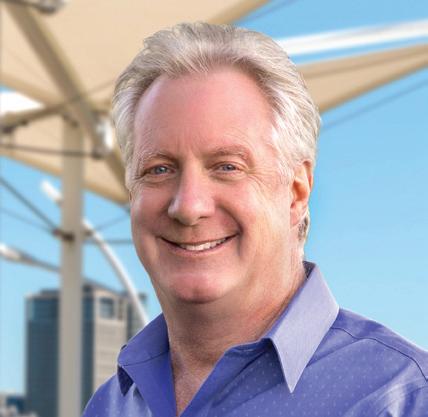
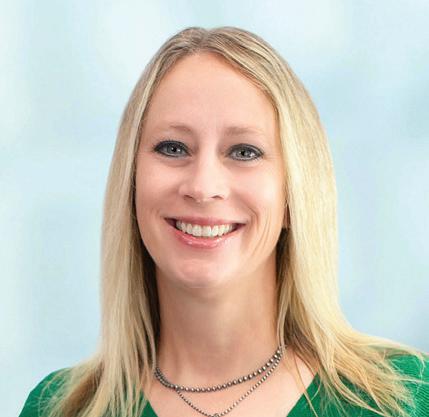




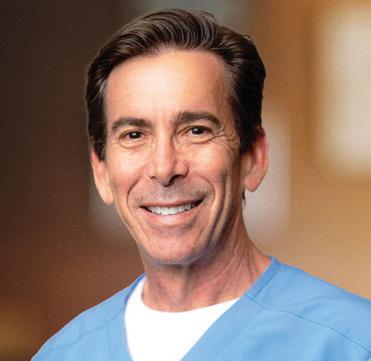




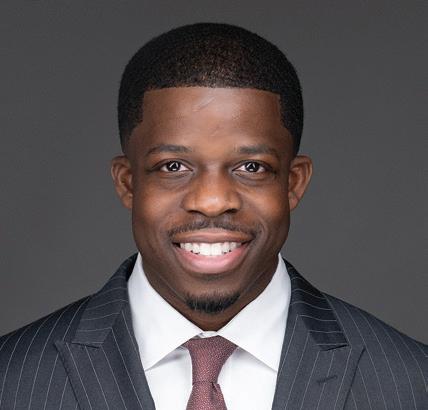







In this special editorial section, the doctors and other healthcare professionals are listed in alphabetical order and by ad size. To learn more about these professionals and their specialty, you can visit their websites provided. Their information presented in Living Well Magazine is provided by the professional and is not a referral service.
Living Well Magazine’s readers were invited to nominate their favorite doctors and other healthcare professionals they felt were great candidates for the Top Doctor and Other Healthcare Professionals recognition by Living WellMagazine . Not all professionals nominated opted to participate in this paid section. While we strive to maintain a high degree of accuracy in the information provided, we make no claim, promise or guarantee about the accuracy of the information provided to us. Selecting a healthcare professional is an important decision that should not solely be based upon advertising or the listings in this magazine. You can usually find out basic information about the medical and healthcare professional you’re interested in online.

Dr. Adams is a board-certified Ophthalmologist and Ophthalmic Surgeon specializing in Vitreoretinal Surgery. While currently practicing in Texas, he has perfected his craft, gained experience, and left a great impact on communities across the country, including California, Minnesota, Ohio, and Florida.
His principal areas of interest include age-related macular degeneration, diabetic retinopathy, retinal detachment repair, macular surgery, retinal lasers, and secondary intraocular lens implantation.
A native of Grapevine, TX, Dr. Adams attended Texas A&M University for his undergraduate degree where he majored in Biomedical Science. He received his Bachelor of Science with summa cum laude honors in just three years. His passion for medicine led him to achieve his medical degree from Baylor College of Medicine in Houston, TX. During medical school, he also received a Master of Business Administration degree from the Jones Graduate School of Business at Rice University where he received the renowned ‘Owl Award’ by coming in first place during the 2011 Action Learning Project competition. Dr. Adams’ medical journey continued when he received training in Ophthalmology during his residency at the Cullen Eye Institute at Baylor College of Medicine. He was further honored to complete a fellowship in Vitreoretinal Surgery at the #1 ranked hospital in the nation at Mayo Clinic where he was awarded the status of ‘Instructor of Ophthalmology’.
With years of experience in his field, Dr. Adams is board-certified in Ophthalmology by the American Board of Ophthalmology (ABO). The ABO is an independent, non-profit organization responsible for certifying ophthalmologists in the United States of America.
Maintaining professional competence, Dr. Adams is an active member of the American Academy of Ophthalmology, American Society of Retina Specialists, Texas Ophthalmological Association, Texas Medical Association, Collin-Fannin County Medical Society, and the American Medical Association.
As a scientific reviewer for multiple medical journals, Dr. Adams’ work has appeared in numerous journal articles, posters, and presentations on a national and international level. In an effort to advance knowledge and research “in the field”, he has also participated in over 25 clinical trials involving the treatment of macular degeneration, diabetic eye disease, and retinal vein occlusions.

& Retina, PLLC 6843 Communications Pkwy., Ste. 810 Plano, TX 75024 (972) 440-2020 • texasmr.com


A MODERN COMMUNITY THAT DELIVERS COMPREHENSIVE CARE
Carrara is a 112-bed facility staffed by friendly clinical professionals with extensive experience caring for residents. At the center of our patient-centered approach is a personalized plan of care that focuses on recovery while promoting the comfort, dignity, and well-being of everyone we serve. We offer around-the-clock clinical support and a comprehensive rehabilitation program, along with access to nearby hospitals and restaurants.
SERVICES WE OFFER IN OUR SKILLED NURSING FACILITY
• Transitional care
• Chronic care
• Post-surgical recovery
• Cardiac recovery
• Pulmonary recovery
• Stroke recovery
• Hospice and palliative care
• Respite care
• 24-hour skilled nursing
• Restorative nursing services
• Physician services
• Interdisciplinary approach
• Individualized care plans
• Medication administration
• Post-surgical stabilization
• Intravenous therapy
• Respiratory therapy
• Tracheotomy care
• Enteral and parenteral care
• Wound management
• Telemedicine
• Rehabilitation services (Inpatient/Outpatient)
• Diagnostic services
• Pharmacy services (7 days a week)
• Other special services
CATEGORIES: Orthopedic Surgeon, Spine Surgeon
Dr. Stephen Courtney is a board–certified, fellowship–trained orthopedic spine surgeon and the founder of the Advanced Spine Center in Plano, TX. Dr. Courtney has been practicing medicine and providing exceptional patient care in Plano since 1995 and has developed superior operative techniques to treat neck and back disorders.
Dr. Courtney is a respected orthopedic spine surgeon who focuses on disorders of the neck and back. His work ethic, outstanding outcomes, and personable approach to patient care have earned him a reputation as one of the best spine surgeons in Texas. He has expanded his reach and has improved the quality of life for patients across the country. Dr. Courtney has developed 9 product lines, and has obtained 18 patents and 14 trademarks on its spine related products. Dr. Courtney has over 100 patents, 14 US-FDA 510(k) spinal implant systems approved, including the only US-FDA 510(k) 3D titanium pedicle screw approved in the WORLD!
Led by Dr. Courtney, the skilled team at Advanced Spine Center cares for patients with neck and back pain using a wide array of the most state–of–the–art tools and techniques— from conservative physical therapy and injection therapy—to advanced pain management, as well as surgical intervention. They employ the latest in minimally invasive spine surgeries, in addition to cutting–edge replacement technology. Incorporating both high tech and high touch, we get our valued patients back to their lives so they can enjoy all the activities they love.
Dr. Courtney is dedicated to educating not just himself and his colleagues but his patients as well. He is known for his straight–forward, honest approach which puts his patients at ease, trusting him to perform highly technical operations that will help them restore their quality of life. He knows the single most important person in the treatment process is the patient.



Florian F. Dibra, MD is a board-certified, orthopedic surgeon located in Frisco, Texas who has extensive knowledge in hip and knee orthopedics and treats operative and non-operative hip and knee arthritis. He focuses on minimally invasive muscle-sparing total hip and knee replacement, anterior hip replacement, partial knee replacement, robotic joint replacement and complex hip and knee replacement revisions. Dr. Dibra is specialized in MagicKnee and MagicHip, muscle-sparing techniques with robotic technology.
Dr. Dibra graduated with honors from Villanova University in Pennsylvania. Soon after, he received his medical degree, with cum laude honors from the esteemed Jefferson Medical College in Philadelphia, Pennsylvania. He completed his orthopedic surgery training at the University of Florida. He continued at the University of Florida Health Hospital to complete his fellowship in Adult Arthroplasty with an emphasis in hip and knee reconstruction. During his surgical training, he accomplished several publications, book chapters, and poster presentations.
Dr. Dibra’s family consists of his wife and two children. In addition to English, he is fluent in Albanian and Italian, and proficient in Spanish. When he is not working, he enjoys spending time with his family, playing soccer, traveling, and cooking.
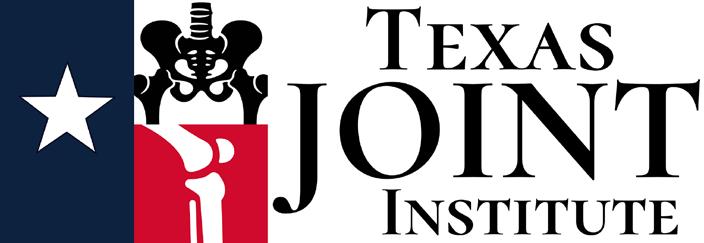
Kwame Ennin, MD, MBA, is a board-certified, fellowship-trained orthopedic surgeon at the Texas Joint Institute, where he specializes in hip and knee replacement, adult reconstructive surgery, and nonoperative management of osteoarthritis. Known for his patient-first approach and surgical expertise, Dr. Ennin has been a trusted leader in the North Texas orthopedic community since 2015.
Dr. Ennin earned his undergraduate degree in biochemistry from the State University of New York at Stony Brook. He went on to receive his medical degree from the University of Cincinnati College of Medicine, followed by a general surgery internship and orthopedic residency at The University of Texas Southwestern Medical Center in Dallas. He further advanced his expertise through a prestigious fellowship in adult reconstructive surgery at William Beaumont Hospital in Michigan.
A strong advocate for education and innovation, Dr. Ennin is a frequent presenter and educator on advanced orthopedic techniques. He shares his knowledge with colleagues on topics such as direct anterior total hip arthroplasty, total and revision knee arthroplasty, partial knee replacement, and robotic-assisted joint surgery. His commitment to clinical excellence extends into research, where he has authored numerous peer-reviewed publications that contribute to the advancement of orthopedic medicine.
Dr. Ennin takes pride in delivering personalized, evidence-based care tailored to the unique needs and goals of each patient. His philosophy is grounded in long-term joint health and a lifelong commitment to his patients’ mobility and well-being.
Whether he is in the operating room, mentoring peers, or consulting with patients, Dr. Ennin’s dedication to excellence and innovation continues to shape the future of joint care in Texas.
4201 Medical Center Dr., Ste. 100 McKinney, TX 75069
(469) 796-4295


4650 Pres. George Bush Tpke., Ste. 100, Sachse, TX 75048 (972) 566-5255
PLANO
4001 West 15th St., Ste. 180 Plano, TX 75093 (972) 566-5255
Dr. Cassandra Wilson, Au.D., has been a dedicated presence at Hearing Services of McKinney since 2010 and proudly took ownership of the practice in 2021. With a deep passion for hearing health and patient care, Dr. Wilson brings a unique blend of clinical expertise and a warm, personal touch to her work. She earned her Doctor of Audiology degree from Texas Tech University Health Sciences Center, following a Bachelor of Music from the University of Wyoming—a background that reflects her deep appreciation for sound in all its forms.
Originally from Canada, Dr. Wilson has called Texas home since 2000. She is a licensed audiologist in the State of Texas and holds her Certificate of Clinical Competence in Audiology through the American Speech-Language-Hearing Association. She is also an active member of the American Academy of Audiology and the Dallas Audiology Society.
Dr. Wilson has had the privilege of working with patients of all ages, helping them navigate their hearing challenges with compassion and clarity. Her approach is centered on building lasting relationships with each patient and guiding them through every step of their hearing journey—from diagnosis and treatment to ongoing support.
Hearing Services of McKinney recently relocated to their new location off Eldorado Parkway in McKinney, offering an updated space designed for comfort, convenience, and continued excellence in care. Dr. Wilson and her experienced team are committed to providing personalized solutions in a welcoming environment, ensuring that every patient feels heard, supported, and confident in their hearing health.
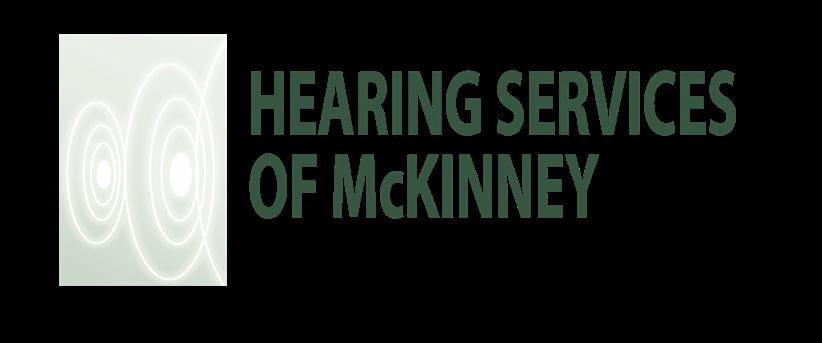

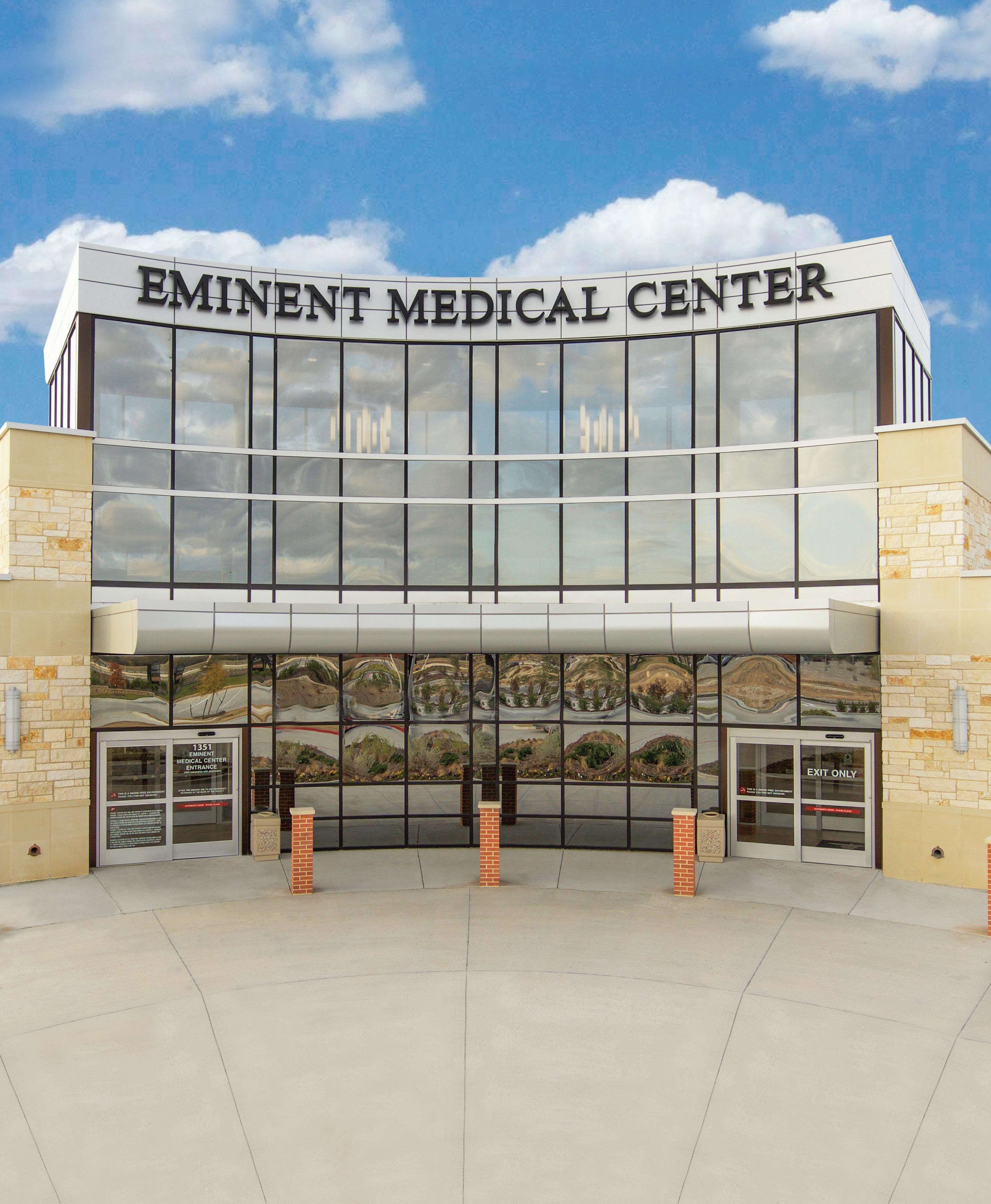
Eminent Medical Center is a premier, boutique treatment destination in the Dallas/Fort Worth area. By considering us as an option for your care, you are taking the first important step towards wellness. Our state–of–the–art facility provides more than a healthcare service, it provides a healthcare experience. We are an In–Network provider with Aetna, Blue Cross Blue Shield, Cigna, and United Healthcare.
Eminent Medical Center was designed by local physicians with their patients’ healthcare, safety, comfort and overall well–being in mind. Our hospital offers both inpatient and outpatient procedures all with highly skilled expert specialists in their fields, ensuring you receive the best healthcare.
Our center features three operating suites, along with a pharmacy, laboratory, emergency department, tranquil pre and post–operative areas, and five private relaxing patient rooms designed with your comfort in mind—right down to the 55” high–definition televisions placed in every room. Your family will also wait in comfort with our luxurious waiting areas, complete with complimentary beverages, free Wi–Fi, and 70” high–definition televisions.
By housing each of these different resources on one hospital campus, we can expedite your treatment and ensure that you receive the prompt attention that you don’t find at some of the larger hospitals in the region. If anything can be done to enhance your experience, we encourage you to let us know right away. We pride ourselves on offering exceptional patient healthcare with an extraordinary patient experience in mind.
Our hospital is currently offering services for: Pain Management, Sports Medicine, General Surgery, Spine Surgery, Orthopedic Surgery, Neurosurgery, Minimally Invasive Spine Surgery, Total Joint Surgery, Foot & Ankle Surgery, Hand Surgery, Headache and Migraine Treatment, and Plastic Surgery. Onsite services of x–ray, laboratory and pharmacy are also available.
In this day and age, you have many options for your healthcare. When you entrust your well–being to the specialists at Eminent Medical Center, you will receive the quality of care that you want and that you deserve. From the moment you arrive at our spacious hospital, you will feel the Eminent difference, the Eminent Choice.

Justin Michael Kane, MD completed his undergraduate degree at the highly regarded engineering college Rensselaer Polytechnic Institute in Troy, New York. He went on to receive his medical degree from Thomas Jefferson University in Philadelphia, Pennsylvania in order to work alongside some of the most influential orthopedic surgeons in the country. He completed an internship at Temple University Hospital, Philadelphia, Pennsylvania. After his internship, he returned to Thomas Jefferson University Hospital to complete his orthopedic surgery residency with the world class surgeons at the most highly sought–after program with The Rothman Institute. Dr. Kane then completed a fellowship in foot and ankle surgery at one of the most prestigious fellowships at Baylor University Medical Center at Dallas.
Before establishing Orthopedic Institute of North Texas (OINT), Dr. Kane worked at Baylor University Medical Center as an orthopedic surgeon as well as the director of research in Human Motion and Performance Center located on Baylor’s Dallas campus. Dr. Kane has authored over 100 publications, book chapters, articles, and research presentations presented internationally. He continues to mentor students and young physicians as they prepare for their career in orthopedic surgery. He continues to perform clinical research and serves as a reviewer for numerous peer reviewed orthopedic journals.
Dr. Kane specializes in foot and ankle problems ranging from bunions and hammertoes to complex reconstructive procedures and limb salvage surgeries. Dr. Kane sees patients from around the world in his Frisco office.
When Dr. Kane is not working at Orthopedic Institute of North Texas (OINT), he actively travels the world participating in a number of medical mission trips helping patients with complex limb deformities. He continues to participate in the American Orthopedic Foot and Ankle Society’s (AOFAS) Vietnam Outreach Program with Mobility Outreach International (MOI) traveling the country working alongside his Vietnamese colleagues teaching the newest treatments to residents and surgeons. He also participates in medical missions in the Dominican Republic with Community Empowerment through Rush University. Dr. Kane enjoys cycling, golfing, cooking international cuisine, and is a passionate animal rights advocate helping with animal rescue.

12228 N Central Expy., Pavillion III, Suite 390 Dallas, TX 75243
Baylor Frisco, Professional Building #1 5575 Warren Parkway, Suite 115
Texas Health Resources – River Walk Marquis 2560 Central Park Ave., Suite 395
(972) 591–6468 • oint.org
Dr. Bilal Mahmood is an orthopedic surgeon with fellowship training in adult hip and knee reconstruction and joint replacement. He specializes in anterior hip replacement, robotic joint replacement, hip resurfacing, total knee replacement, partial knee replacement, minimally invasive joint replacement, same-day joint replacement, complex hip and knee deformity, revision joint replacement, hip and knee arthritis, osteonecrosis, hip dysplasia, and femoroacetabular impingement (FAI).
He aims to care for each patient with the same quality, compassion, and respect that he would want his family to receive when seeking medical care. Along those same lines, he wants his patients to be able to make well-informed decisions about their healthcare. Therefore, his first rule is to listen to his patients about their symptoms. Dr Mahmood will then use his expertise to thoroughly explain and educate his patients as to what is contributing to their pain and present them with all potential options. Ultimately, Dr. Mahmood and his patient make an informed decision together.
Technology behind hip and knee replacement is an ever-changing field with new advancements and technologies coming forth every day. Should surgery be needed, Dr. Mahmood incorporates innovative technologies in hip and knee replacement surgery such as robotics, computer navigation, and minimally invasive techniques to provide personalized and up-to-date surgical care. Dr. Mahmood’s expertise and innovative technologies provides him with the unique opportunity to make real, positive change in his patients’ lives almost immediately with the goal of reducing pain and restoring function so that patients can continue doing the things that they enjoy in life.
Outside of work, Dr. Mahmood enjoys spending time with his wife and children. His hobbies include alpine skiing, baseball, hockey, biking, and travel.
He is involved with local outreach organizations for medically underserved populations. He is also involved in research and innovation to advance hip and knee joint replacement.





WINNING CATEGORIES: Ophthalmologist, Lasik Surgeon









Thousands of North Texans choose Key-Whitman Eye Center because they want better vision, and Key-Whitman is one of the few eye centers that offers the full range of vision improvement options. This highly experienced team of doctors offer patients comprehensive eye care with the convenience of locations across Dallas-Fort Worth. Chief surgeon Dr. Jeffrey Whitman is the past president of the American College of Eye Surgeons and has been recognized in D Magazine as one of the Best Doctors in Dallas for 23 consecutive years and in Living Well Magazine for eight consecutive years. He is one of the first surgeons in North Texas to be trained in LASIK eye surgery for nearsightedness, farsightedness, and astigmatism.
Today, Key-Whitman is known for all-laser, blade-free LASIK, offering patients greater predictability and accuracy than ever before. The practice specializes in LASIK, EVO ICL, cataract surgery with Light Adjustable Lens, PanOptix, Odyssey, Symfony, and comprehensive adult eye care. From eye exams and the management of glaucoma, corneal disease, diabetic eye disease, and dry eye to reconstructive and cosmetic eyelid surgery, Key-Whitman continues to provide personalized, high-tech solutions to help patients see and look their best.






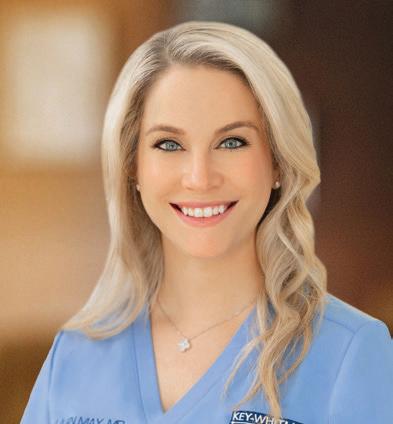
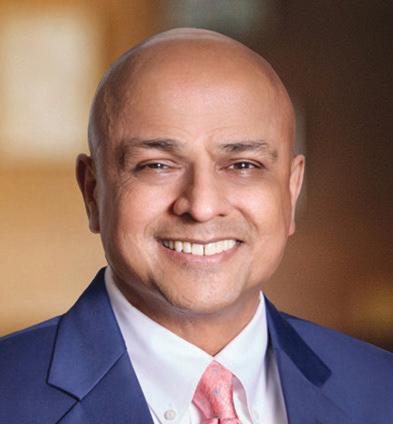






5804 Coit Rd., Ste. 100 Plano, Texas 75023
502 N. Valley Pkwy., #2 Lewisville, Texas 75067
6161 N. State Hwy. 161, Ste. 320 Irving, Texas 75038
714 N. Hampton Rd. Desoto, TX 75115
(972) 805–9985 • swfacenter.com
Providing every patient with individualized care and effective treatments for their foot, heel and ankle problems has always been the focus for Dr. Mobarak. His experience is backed with solid training and advanced knowledge of podiatry conditions and how to treat them.
Dr. Mobarak grew up in Richardson, TX and earned his bachelor’s degree in biochemistry with honors from Baylor University. He then attended Barry University in Florida to graduate with a Doctorate in Podiatric Medicine and Surgery followed by his surgical residency at the Central Alabama VA in the areas of intense limb salvage and foot and ankle trauma.
Dr. Mobarak is a Fellow of the American Professional Wound Care Association and board certified in wound care, as well as foot reconstruction. He is also trained in hyperbaric oxygen treatment. As an adjunct faculty member at both Barry University School of Podiatric Medicine and Surgery, and Greenville Podiatric Surgical Residency Program, Dr. Mobarak teaches his surgical residents the newest and most effective techniques in foot and ankle surgery. He has even traveled to the Middle East to teach other doctors about limb salvage and hyperbaric oxygen and hopes to set up a limb salvage program there to help prevent loss of limbs.
Dr. Mobarak is sought out for his extensive knowledge of wound care, limb salvage, and foot and ankle trauma treatments. His medical residency specifically focuses on diabetic limb salvage and wound care. He is particularly adept in nerve release and provides a treatment that can allow patients to walk the next day after surgery and results in decreased pain after surgery.
Combining his knowledge of foot surgery with his love of teaching, Dr. Mobarak is an avid lecturer. He speaks at national events on topics including advanced wound care, diabetic limb salvage, hyperbaric medicine, foot pain, and ankle trauma. He serves on the infectious disease committee at the Medical Center of Plano. He also writes in medical journals emphasizing on wound care and limb salvage.

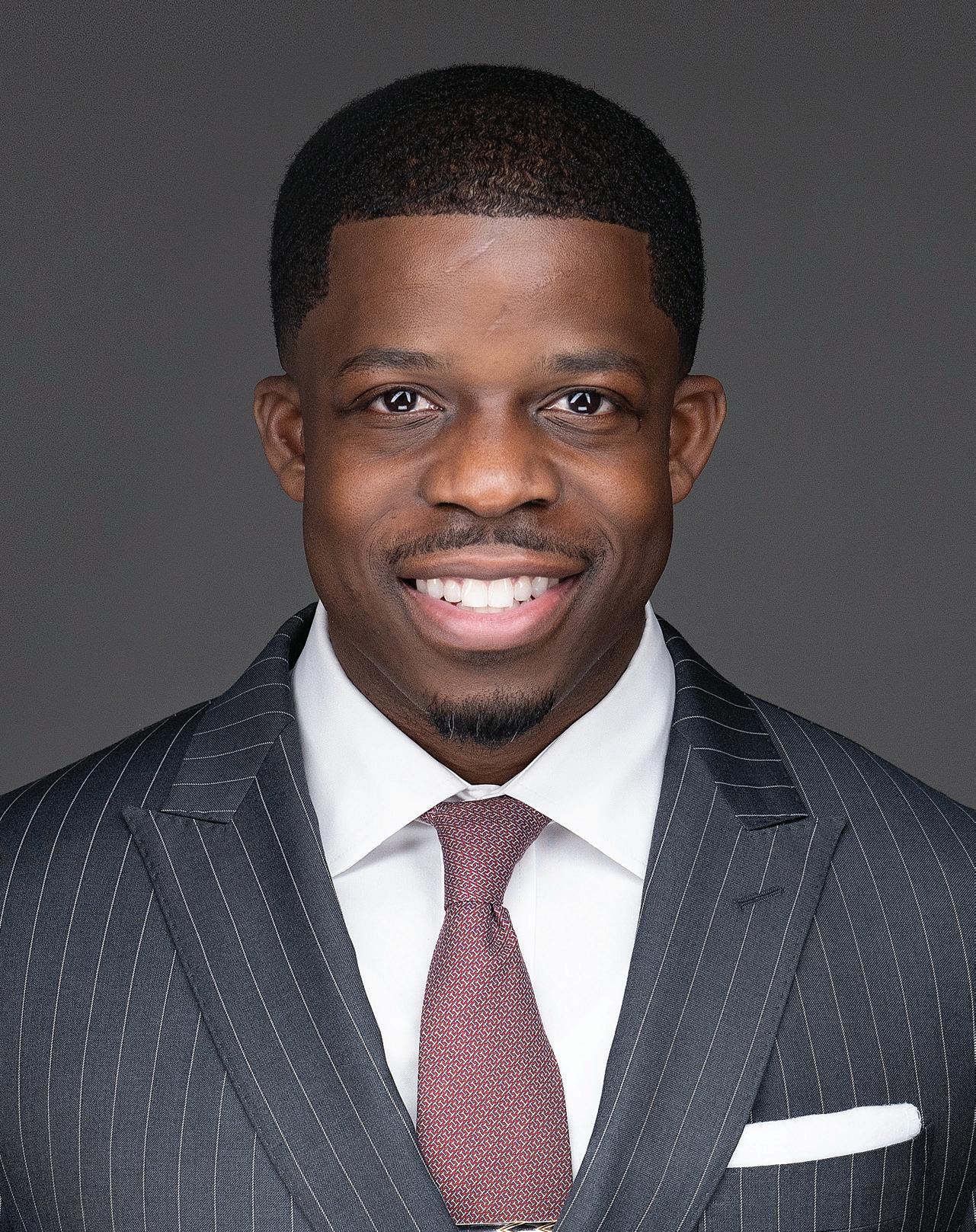

Brian Nwannunu, MD, MS, is a fellowship-trained orthopedic surgeon specializing in adult reconstruction and total hip and knee replacements at the Texas Joint Institute, with locations in McKinney and in Allen, Texas. His approach blends advanced surgical skill with a commitment to compassionate, patient-centered care. He is also one of the few official Jiffy Knee™ surgeons in the North Texas area.
Dr. Nwannunu began his academic journey at Morehouse College in Atlanta, Georgia, where he was a member of the prestigious Honors Program. He went on to earn a master’s degree in physiology from Georgetown University in Washington, DC, focusing on complementary and alternative medicine. He received his medical degree from Howard University College of Medicine, where he was inducted into the Alpha Omega Alpha Honor Medical Society, a distinction awarded to top medical students nationwide.
His orthopedic surgery residency was completed at John Peter Smith Health Network in Fort Worth, Texas. Dr. Nwannunu then pursued advanced fellowship training in adult reconstruction at Baylor College of Medicine in Houston. Dedicated to extending his care beyond the clinic, he also participated in a medical mission trip to Antigua, Guatemala, offering orthopedic care and health education to underserved communities.
Dr. Nwannunu is affiliated with Medical City Orthopedic & Spine Surgery Center at Dallas and Medical City McKinney, where he contributes to their Joint Replacement Center of Excellence. He is an active member of numerous professional organizations, including the American Academy of Orthopedic Surgeons, American Association of Hip and Knee Surgeons, American Medical Association, and National Medical Association. He is also a proud member of Kappa Alpha Psi Fraternity, Inc.—Pi Chapter.
Outside of medicine, Dr. Nwannunu enjoys playing basketball, weight training, traveling, attending art and music festivals, and listening to jazz. He also has a passion for world news and reading, reflecting his curiosity and commitment to lifelong learning.

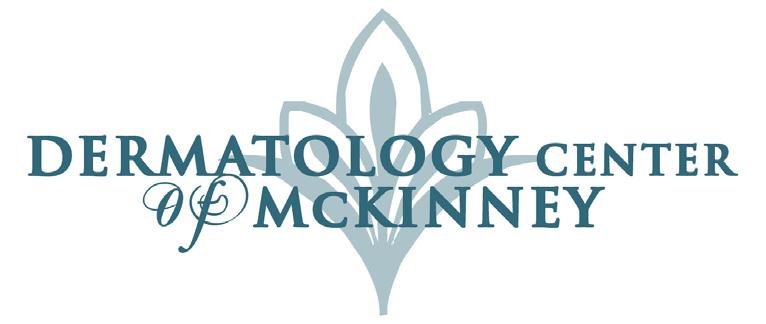
Dr. Ralston is a Board-Certified Dermatologist and an acclaimed dermatosurgeon, recognized for his exceptional contributions to the field. In 2024, he was honored as the Best Physician—Dermatologist for the 14th consecutive year by the McKinney Chamber of Commerce’s Best of McKinney. Additionally, he received accolades from McKinney/Allen Living Magazine as the Best Dermatologist and Best Laser Hair Removal specialist for the sixth year in a row. He is also a three-time recipient of the Place for Botox and Best Tattoo Removal award. In 2025, Living Well Magazine named him a Top Docs Winner for the seventh consecutive year, and he was listed among D Magazine’s Top Doctors in 2020. Furthermore, he was recognized as the Best Dermatologist in Living Magazine’s 2014 Best of McKinney/Allen.
Dr. Ralston offers comprehensive care and the latest treatments for a wide array of dermatological issues affecting pediatric, adolescent, and adult patients, including skin cancer, eczema, acne and acne scars, wrinkles, age spots, rashes, and psoriasis. He employs stateof-the-art treatment options such as GentleCure image-guided SRT for non-surgical skin cancer treatment and photodynamic therapy (PDT) to address skin cancer, acne, sun damage-related aging, and other conditions. His professional focus is on utilizing technology to advance medical practice, aiming for optimal skin health through preventive and high-quality care. With over 35 aesthetic devices at his disposal, Dr. Ralston enhances treatment outcomes and shares his expertise by lecturing nationally to physicians and aesthetic providers about lasers and medical/aesthetic technology.
Dr. Ralston earned his medical degree from The University of Texas Medical School at Houston and completed his dermatology residency at the State University of New York (SUNY) in Buffalo, where he served as Chief Resident. He further specialized with a fellowship in Cutaneous Oncology and Photodynamic Therapy (PDT) at the prestigious Roswell Park Cancer Institute in Buffalo, New York, where he pioneered less invasive methods for treating skin cancer and pre-cancers. Dr. Ralston has contributed to medical literature through textbook chapters and articles and was awarded Best Clinical Science Report from Roswell Park Cancer Institute. He has also received additional training in skin surgery, including Mohs micrographic surgery.
Dr. Ralston, along with his wife and children, enjoys living in McKinney. In his free time, he appreciates music, technology, reading, the arts, and spending quality time with his family.
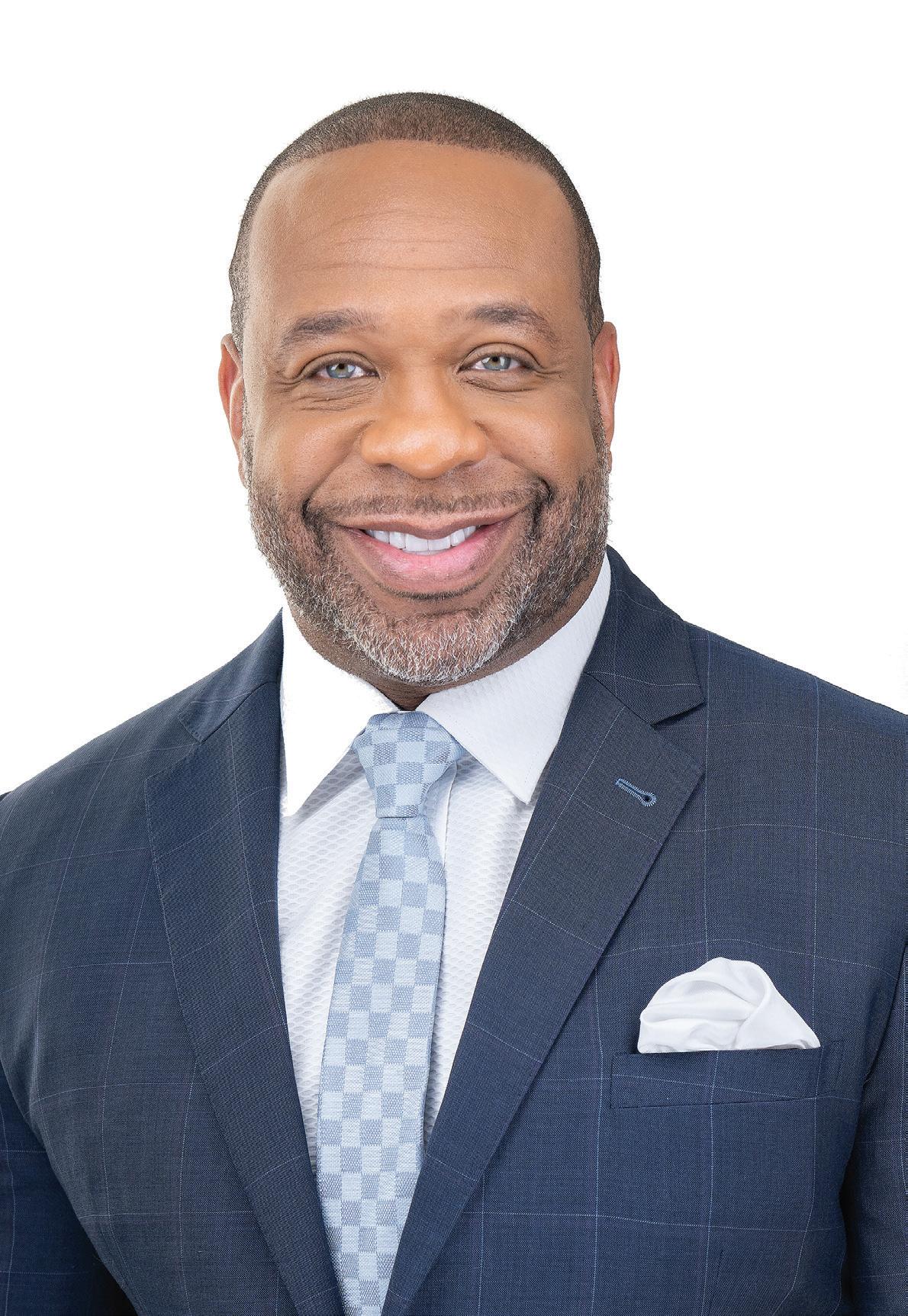

Charles E. Toulson, MD, MBA, is a board-certified orthopedic surgeon with Texas Joint Institute. He completed a fellowship in adult reconstruction providing expertise in total hip and knee replacements and revisions. Since 2007, Dr. Toulson has pioneered the anterior total hip replacement and robotic-assisted joint replacements in our community.
The anterior hip replacement is a unique approach where the surgeon is able to perform the hip replacement without cutting into the surrounding hip muscles, resulting in less pain, a faster recovery and fewer limitations after surgery.
Dr. Toulson was an early adopter of robotic-assisted total joint replacement technology, bringing his passion for excellent patient care and outcomes to the McKinney area upon completing his fellowship. Utilizing the robot provides better precision and accuracy for the insertion of the new joint, resulting in better alignment and better functionality after the surgery.
With a focus on providing the very best in orthopedic care, Dr. Toulson has consistently been named a top orthopedic surgeon in Texas for over a decade. He is a premier joint replacement surgeon in North Texas and offers appointments at our McKinney, Allen and Sherman, Texas locations.
Dr. Toulson earned his doctorate in medicine at the University of North Carolina at Chapel Hill. His residency was at renowned Johns Hopkins Hospital in Baltimore, one of the highest-ranked hospitals in the United States. Afterward, he completed his fellowship in one of the top orthopedic programs in the country at the Hospital for Special Surgery in Manhattan, New York.
Dr. Toulson has frequently earned public recognition for his outstanding contributions to the health of the Texas community. He’s been named numerous times among the Best Doctors in Dallas for orthopedic surgery by D Magazine, Best Orthopedic Surgeons in Collin County by D Magazine, Best Orthopedic Surgeon by Living Magazine, and Top Orthopedic Surgeon by Living Well Magazine
Dr. Toulson has partnered with many local hospitals to support their dedication to become designated Joint Replacement Center of Excellence, raising the bar for orthopedic care in our community.

We inherit some great characteristics from our ancestors. A sense of humor. A strong work ethic. Maybe even features such as high cheekbones and expressive eyes. But sometimes we also receive Dad’s baggy eyelids, Mom’s sagging jowls, or weak chin. Some of these traits can hide our inner beauty. Coupled with the effects of time, they may cause us to look tired and even older than we feel.
Unlike generations before us, we can explore surgical and nonsurgical options that not only produce natural results but are also affordable. Dr. Roberts specializes in facial cosmetic medical procedures, including the “scarless” face lift, endoscopic brow lift, blepharoplasty, otoplasty, chin and lip implants. For over 20 years, he’s devoted his practice to helping his patients achieve natural results and endeavoring to exceed their expectations. “Each patient is unique,” Dr. Roberts said, “so it’s important to really listen to what the patient wants. I start by asking what bothers you. What do you hope to achieve?”
His objective is to provide results that are in harmony with individual facial features. He also wants patients to be able to go out in public without makeup if they so desire. This requires him to take additional time in each procedure to incorporate a series of precise surgical methods.
For example, during a female Face Lift, he utilizes post–tragal incisions placed on the inside of the ear and bevels placement of incisions at the hairline to help provide a virtually “scarless” appearance. “No surgery can be performed without an incision, but over the years I’ve perfected my techniques so incisions can be practically imperceptible in many procedures I perform,” Dr. Roberts said.
In an Endoscopic Brow Lift, he typically places tiny endoscopic incisions hidden above the hairline.
In each procedure, his goal is to provide an outcome that fits with an individual’s unique anatomy, as well as incorporating each person’s unique desires and goals.
“There’s an artistic element to every aspect of our practice,” Dr. Roberts said. “Many of our patients find a new or renewed sense of self–confidence. To me, it is as much of an aura of confidence as it is the results of the procedure that helps re–shape a person’s beauty. That is very fulfilling to me.”
Outside of his medical practice, Dr. Roberts enjoys saltwater fishing, golfing, and gourmet cooking. Known for building strong connections with his patients, he often shares stories about growing habanero peppers, crafting his signature praline cheesecake, and witnessing unforgettable sunrises while wade fishing for redfish. A lifelong Texan, Dr. Roberts has spent most of his life in Dallas and Austin.
Dr. Roberts is certified by the American Board of Facial Plastic & Reconstructive Surgery and the American Board of Otolaryngology–Head & Neck Surgery. All procedures are performed at Dr. Robert’s AAAASF certified facility near George Bush Tollway and Preston Road in Dallas suburb, Plano, Texas.
Nationally–known facial plastic surgeon Dr. Gregory D. Roberts has refined a face lift technique, known as the “scarless” face lift, which allows patients to recover from surgery with virtually no visible scarring. The “scarless” face lift involves a series of surgical methods and meticulous precision that can help restore more natural, youthful facial features with virtually imperceptible signs of surgical intervention.
“My one guiding principle is that your cosmetic surgery looks natural,” said Dr. Roberts. “You should look refreshed and well–rested, never pulled.” Dr. Roberts takes the time necessary to meticulously place and close incisions, ensuring that his patients’ incisions are virtually invisible, as well as helping to minimize bruising and quicken the healing process.
I inherited drooping eyes from my dad, sagging jowls from my mother. But Dr. Roberts has completely changed that for me. Now I get comments even from strangers about how good my skin looks. Only my close friends know what I’ve had done, but I feel dramatically different. It’s helped my confidence and I’m definitely more comfortable when I’m face–to–face with people.”
–Kathy

After surgery, I was wearing a ponytail two weeks later and attended a work conference a week after that. No one could tell I’d just had surgery! To me, it’s so natural. I can’t say enough good things about Dr. Roberts and his staff.” –Janet




Dr. Roe brings international experience and personalized attention to dentistry. Nothing is more important to him than your smile. He and his staff are committed to making sure that you like what you see in the mirror. After all, it’s not just a reflection of you—it’s also a reflection on us!
His mission is simple—to make you healthy and happy. However, to achieve that goal, there are several options and variables that can be confusing. This is where Dr. Roe’s years of experience as a prosthodontist can help you choose the options that best suit you and your budget. Dr. Jason Roe has performed cosmetic dentistry and provided tooth replacement options for countless patients, not only in the Dallas area, but all over the US and from around the world.
Dr. Roe attended Baylor College of Dentistry in early 2000’s and followed with several noteworthy years in the military. During his time in the U.S. Army, Dr. Roe provided care to active–duty soldiers and family members, both stateside and in Afghanistan. He was hand–selected by the commanding general of the Special Forces to accompany them on their tour and provide dental services to Special Forces soldiers during their deployment.
While serving stateside, Dr. Roe completed a Prosthodontic Residency and went on to challenge the American Board of Prosthodontics becoming a Board–Certified Prosthodontist.
Dr. Jason Roe is a lifelong learner and a true educator. For several years he served as Chief Prosthodontic Mentor for Fort Bragg’s comprehensive dental residency. During that time, he was named mentor of the year. In addition, he has guest lectured on implant and full mouth restorations at Harvard and multiple other Advanced Education in General Dentistry venues across the country.
Dr. Roe and his team take pride in providing individualized, high–quality dental care. If you are ready to improve the quality of your life and regain your confidence, call him today and make an appointment for a consultation. He’s happy to walk you through the many possibilities available to give you a smile you’ll be proud to share.

Khalid Yousuf, MD, MS, is a board-certified orthopedic surgeon specializing in hip and knee replacement surgery. Known for his precise technique and commitment to innovation, Dr. Yousuf utilizes the latest surgical and technological advancements—including robotic-assisted procedures, partial knee replacements, and the anterior hip approach— to help patients find relief from joint pain and return to active, independent lives.
Dr. Yousuf earned his medical degree from Louisiana State University in New Orleans and completed his orthopedic surgery residency at the University of Oklahoma, with a focus on orthopedic surgery and sports medicine. He went on to complete a prestigious fellowship in joint replacement surgery at the Mayo Clinic in Rochester, Minnesota—one of the most respected orthopedic programs in the country. Dr. Yousuf serves as the Medical Director of Hip and Knee Surgery and Medical Director of Orthopedic Robotics at Baylor Scott and White for the East Region.
In recognition of his clinical excellence and leadership, Dr. Yousuf has been repeatedly named one of the Best Doctors in Dallas and Collin County. In 2016, he received the Healing Hands Award from Little Company of Mary Hospital in Chicago. Most recently, he earned the distinction of Certified Physician Executive through the American Association of Physician Leaders, underscoring his dedication to advancing both patient care and the field of medicine.
Dr. Yousuf has a strong interest in medical education and recently served as an adjunct assistant professor at Texas A&M University College of Medicine, where he continues to mentor future physicians.
A native Texan, Dr. Yousuf enjoys spending time with his wife and three daughters. The family shares a love of cooking, traveling, and swimming together. In his downtime, he indulges his lifelong passion for cars— especially muscle cars—and fondly recalls his younger days racing his Camaro Z28 and Trans Am on the quarter-mile track.
“Helping people stay active and independent,” he says, “is what makes this work so rewarding.”
AT THE STAR
3800 Gaylord Pkwy., Ste. 810, Frisco, TX 75034
5220 W. University Dr., Physician Bldg. 2, Ste. 300, McKinney, TX 75071

4716 Alliance Blvd., Pavillion II, Ste. 600, Plano, TX 75093
7217 Telecom Pkwy., Ste. 100, Garland, TX 75044

Texas Back Institute (TBI) has served the North Texas area in spine care for over 45 years. An uncompromising desire to put patients first and provide individualized spine care has helped change the treatment options available to patients for neck and back pain.
Today, TBI is a leader in artificial disc replacement, minimally invasive spine surgery, complex revision surgery, and treatment of spinal deformity. TBI has trained hundreds of surgeons, scientists, and allied health professionals now practicing worldwide. Its research institute employs state-of-the-art technology and is actively involved in many clinical trials, including artificial disc replacement, minimally invasive technologies, and robotic spine surgery. Texas Back Institute has remained one of the most academic practices in spine care. It is one of the largest multidisciplinary spine centers in the world, providing comprehensive care for neck and back pain. With a fully dedicated staff of board-certified orthopedic spine surgeons, neurosurgeons, physiatrists, and physical therapists, the TBI team works together to support its mission of helping patients get back to life. The 26 physicians at Texas Back Institute are leaders in the surgical
and nonsurgical treatment options for back and neck pain, from the most common outpatient procedures to the most complex cases. Thanks to the unmatched expertise of the medical staff, the advanced diagnostic testing, and an unparalleled commitment to patient care, the Texas Back Institute physicians can identify the potential cause of your pain and create a treatment plan specific to your needs.
Texas Back Institute has developed several spine specialty programs. These include the Minimally Invasive Spine Surgery Center, Center for Disc Replacement, Scoliosis and Spine Tumor Center, and Complex Back Surgery Center. These programs give patients access to highly-trained care teams who focus specifically on these areas of spine care, allowing patients in the North Texas area access to treatment options for their individual problems from physicians with extensive experience in these areas.
“At Texas Back Institute, finding the right solution for each patient and offering the least invasive treatment is core to our belief and the foundation for all treatment plans.” Dr. Michael Duffy.


ALLIANCE
3025 N. Tarrant Pkwy., Ste. 220 Fort Worth (Alliance), TX 76177
ARGYLE
310 FM 407E, Ste. 100 Argyle, TX 76226
DALLAS
12222 N. Central Expy. Pavilion II, Ste. 310 Dallas, TX 75243
3537 S. Interstate 35, Ste. 308 Denton, TX 76210
FLOWER MOUND
4370 Medical Arts Dr. River Walk Bldg. III, Ste. 230 Flower Mound, TX 75028
FORT WORTH
1650 W. Rosedale St. Ste. 301 Fort Worth, TX 76104
FRISCO
5575 Frisco Square Blvd. Ste. 400 Frisco, TX 75034
LEWISVILLE
500 W. Main St., Ste. 380 Lewisville, TX 75057
MCKINNEY
4510 Medical Center Dr., Ste. 106 McKinney, TX 75069
NORTH RICHLAND HILLS
4351 Booth Calloway Dr., Ste. 404 Fort Worth, TX 76180
CENTRAL PLANO
4001 W. 15th St. Ste. 455 Medical Office Bldg. III Plano, TX 75093
PLANO
6020 W. Parker Rd. Ste. 200 Plano, TX 75093
ROCKWALL
3164 Horizon Rd. Ste. 100 Rockwall, TX 75032
SASCHE
4650 President George Bush Turnpike, Ste. 100 Sachse, TX 75048


By DANIEL MORGAN
As we grow older, our homes should grow with us, becoming places that feel safe, comfortable, and easy to navigate. A little planning and effort can turn your home into a sanctuary that helps you maintain your independence for years to come. With a few smart changes, you’ll not only make your home safer but also keep it a space where you can thrive. Let’s talk about how to make that happen—one thoughtful step at a time.
Let’s start with the bathroom. It’s no secret that this is where many falls happen, but a few updates can make it much safer. Imagine having a sturdy bench seat in the shower where you can sit comfortably while bathing. Or how about widening the shower entry to make it wheelchair or walker-friendly? Adding grab bars near the toilet and in the shower isn’t just practical; it’s peace of mind. And if you’re looking for something quick and easy, those nonslip stickers you can add to the shower floor are a game-changer. They’re affordable, effective, and you don’t need a pro to install them.
Mobility throughout the house is another biggie. Think about those narrow doorways or uneven floors. If you’re planning a remodel, widening doorways can make a world of difference for anyone using a wheelchair or walker. Fixing uneven floors is another must-do, but in the meantime, here’s something you can tackle today: remove those throw rugs that like to curl up and trip you, secure any loose cords, and clear out cluttered walkways. It’s amazing how much safer things feel when the space is free of tripping hazards.
Lighting might not be the first thing you think about, but it’s essential. Dim hallways and shadowy corners can hide obstacles. Adding brighter lights to walkways, stairs, and entryways is such a simple fix. And don’t underestimate the power of a good nightlight! A soft glow in the bathroom or hallway can help you find your way safely during late-night trips.
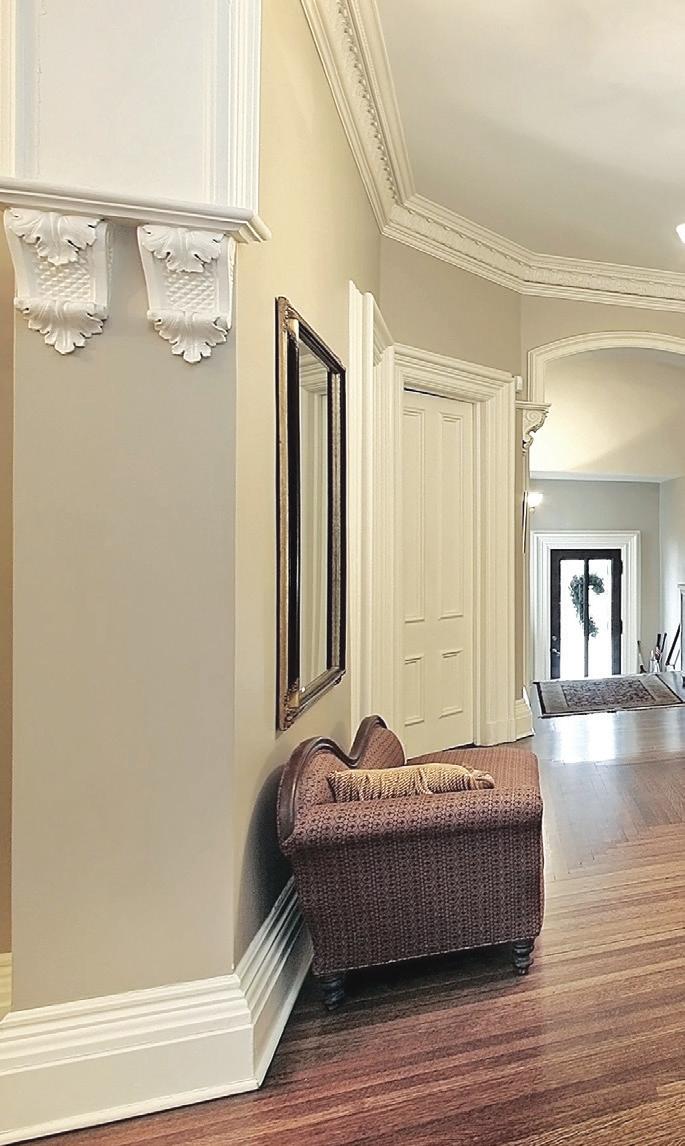
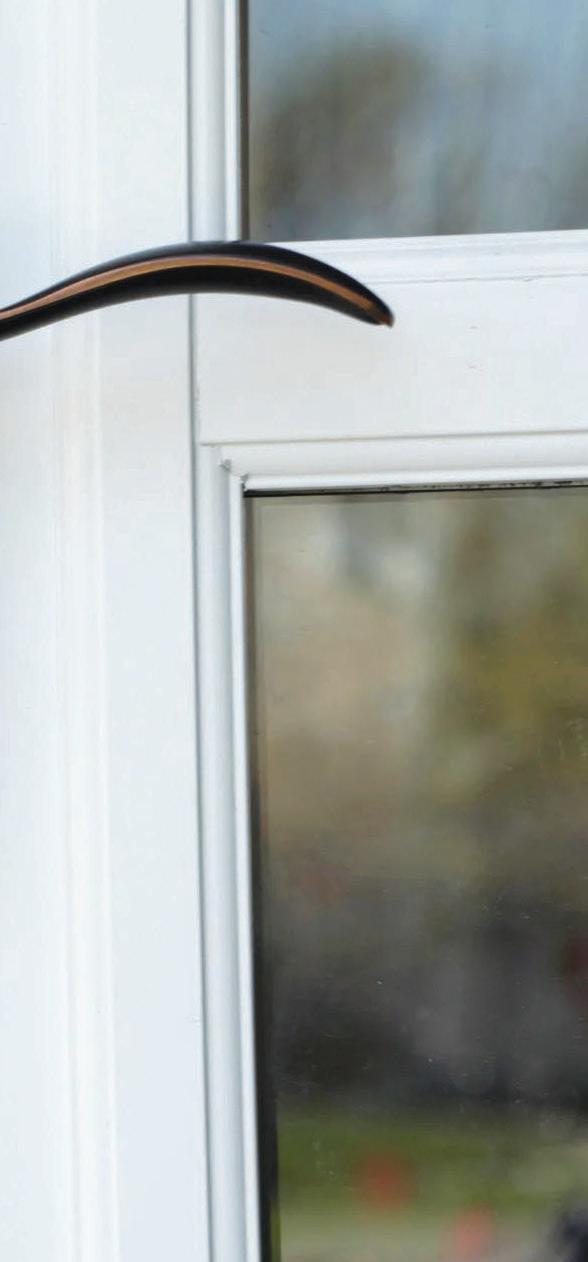
Now, let’s move to another part of the house and chat about the kitchen—another hub of activity. Little tweaks can make a big difference here, too. Lowering items from unreachable places or adding pull-out shelves can save you from unnecessary stretching or bending. Lever-style faucet handles are easier on arthritic hands, and keeping commonly used items within arm’s reach is just plain smart. No more climbing up on stools to grab that heavy pot from the top shelf—let’s keep things safe and simple.
We can't fully talk about safety without mentioning common sense—the kind of wisdom we know deep down but sometimes need a little reminder about. Avoid climbing on ladders or trying to lift heavy objects by yourself. It’s not worth the risk. If you’re working outside in the heat, stay hydrated and take breaks in the shade. These might sound like small things, but they’re the everyday habits that keep you safe and healthy. Technology is a dear friend when it comes to home safety. Smart doorbells with cameras let you see who’s at the door without even getting up. Emergency alert systems and voice-activated assistants are also amazing tools, there are also wearable options. Whether it’s calling for help after a fall or turning on lights with just your voice, these gadgets can give you and your loved one’s peace of mind.
Now, let’s talk about security, because staying safe isn’t just about physical spaces. Be cautious about giving out personal information over the phone or internet. Scammers know how to sound convinc-

ing, but it’s okay to hang up or say no. Use caller ID to screen calls, and don’t share sensitive details with anyone you don’t trust. Those smart doorbells I mentioned earlier? They’re also great for security, letting you see and even talk to visitors without opening the door. And if you’re online, make sure your passwords are strong, unique, and kept in a secure place.
Fall prevention deserves its own special focus. Adding sturdy railings to both sides of staircases is a fantastic investment. Make sure stairs are well-lit and consider putting non-slip mats or adhesive strips on them. And don’t underestimate the power of good shoes! Supportive, non-slip footwear can make all the difference.
The outdoors needs some love, too. Installing ramps at entrances can make getting in and out of the house so much easier. Check your outdoor pathways for uneven spots or debris and make sure they’re well-lit. Motion-sensor lights are a brilliant addition for nighttime visibility and security.
For those planning ahead, think about more significant changes that will make life easier down the road. A bedroom and bathroom on the ground floor eliminate the need for stairs altogether. Replacing traditional doorknobs with lever handles or installing pocket doors can make getting around much simpler. These thoughtful updates don’t just make the home safer—they make it more convenient and welcoming.
I hopefully gave you a lot to think about but creating a safe and functional home doesn’t have to be overwhelming. Start small with the easy fixes you can do today, like removing tripping hazards or adding non-slip stickers in the shower. From there, work your way up to the bigger changes, like widening doorways or adding assistive technology. The goal is to create a space that feels like home—a place where you can move comfortably, live independently, and stay in the home you love for many wonderful years to come.






